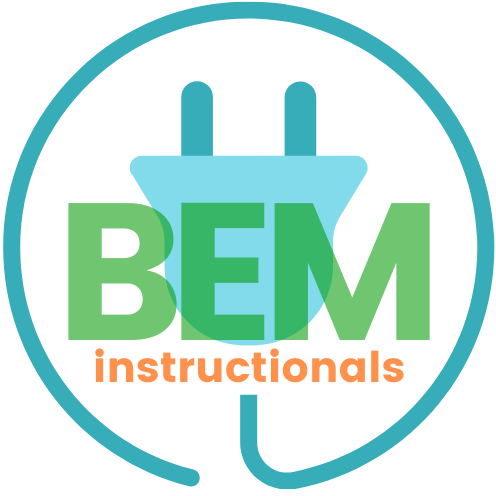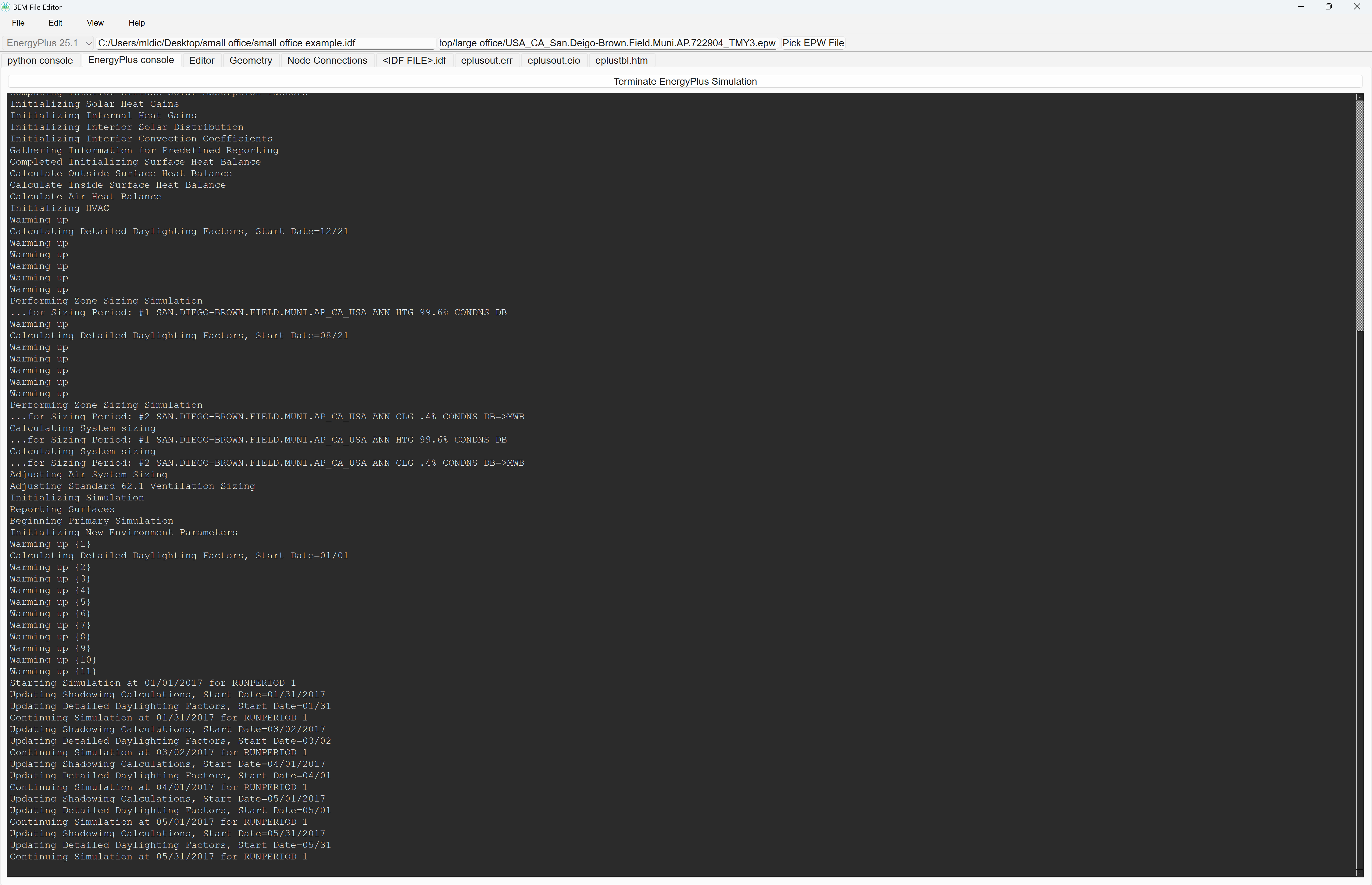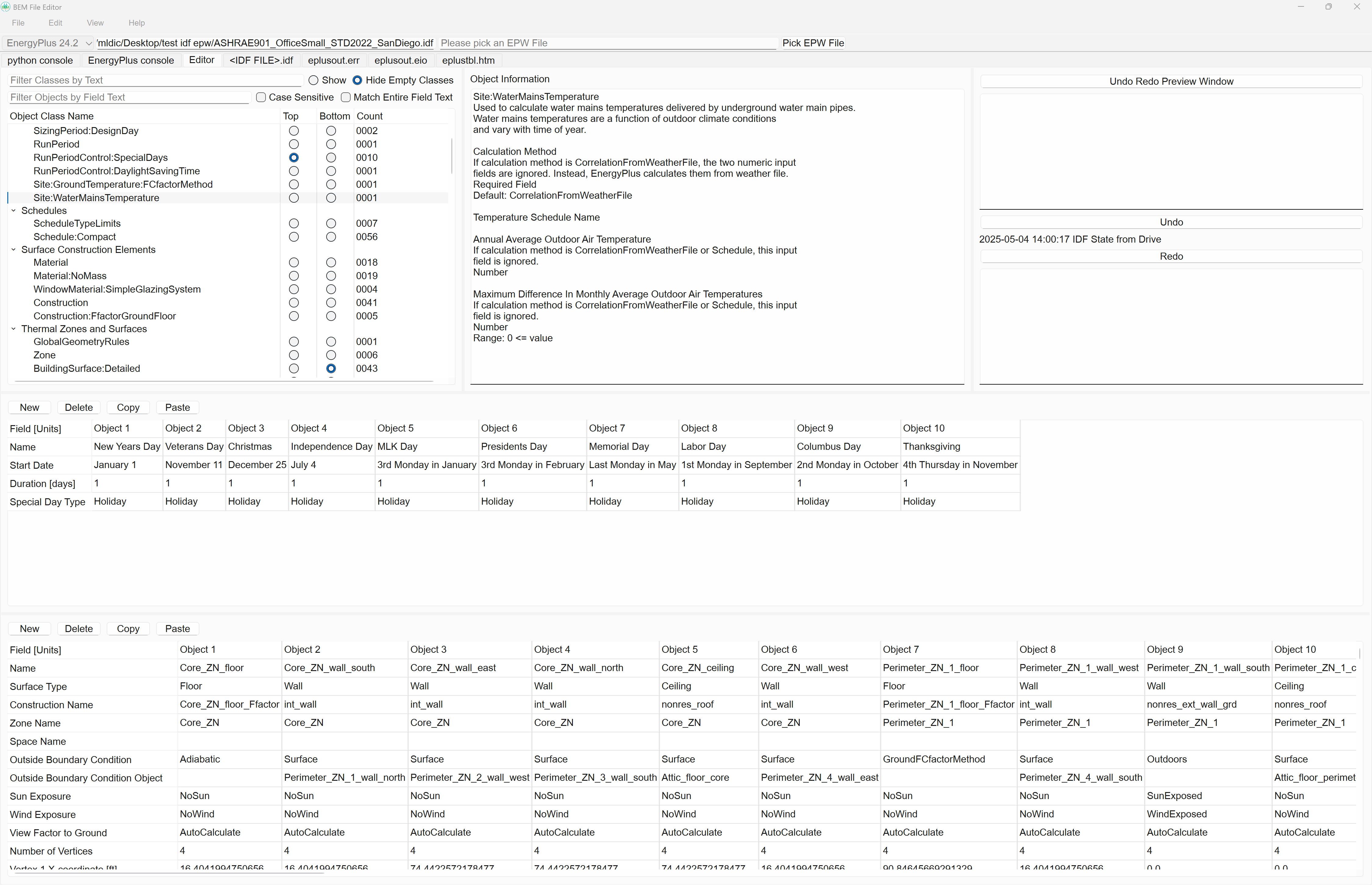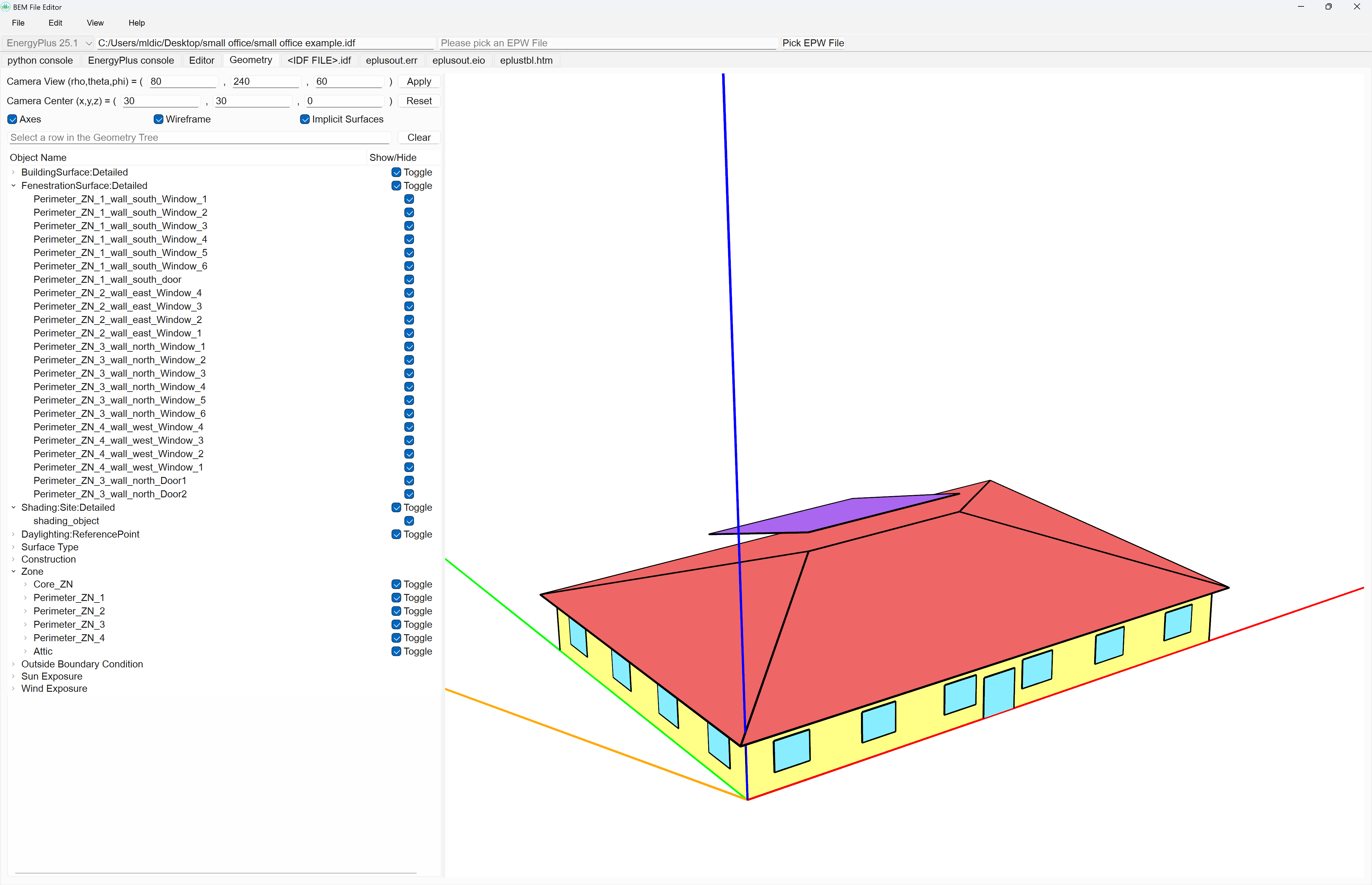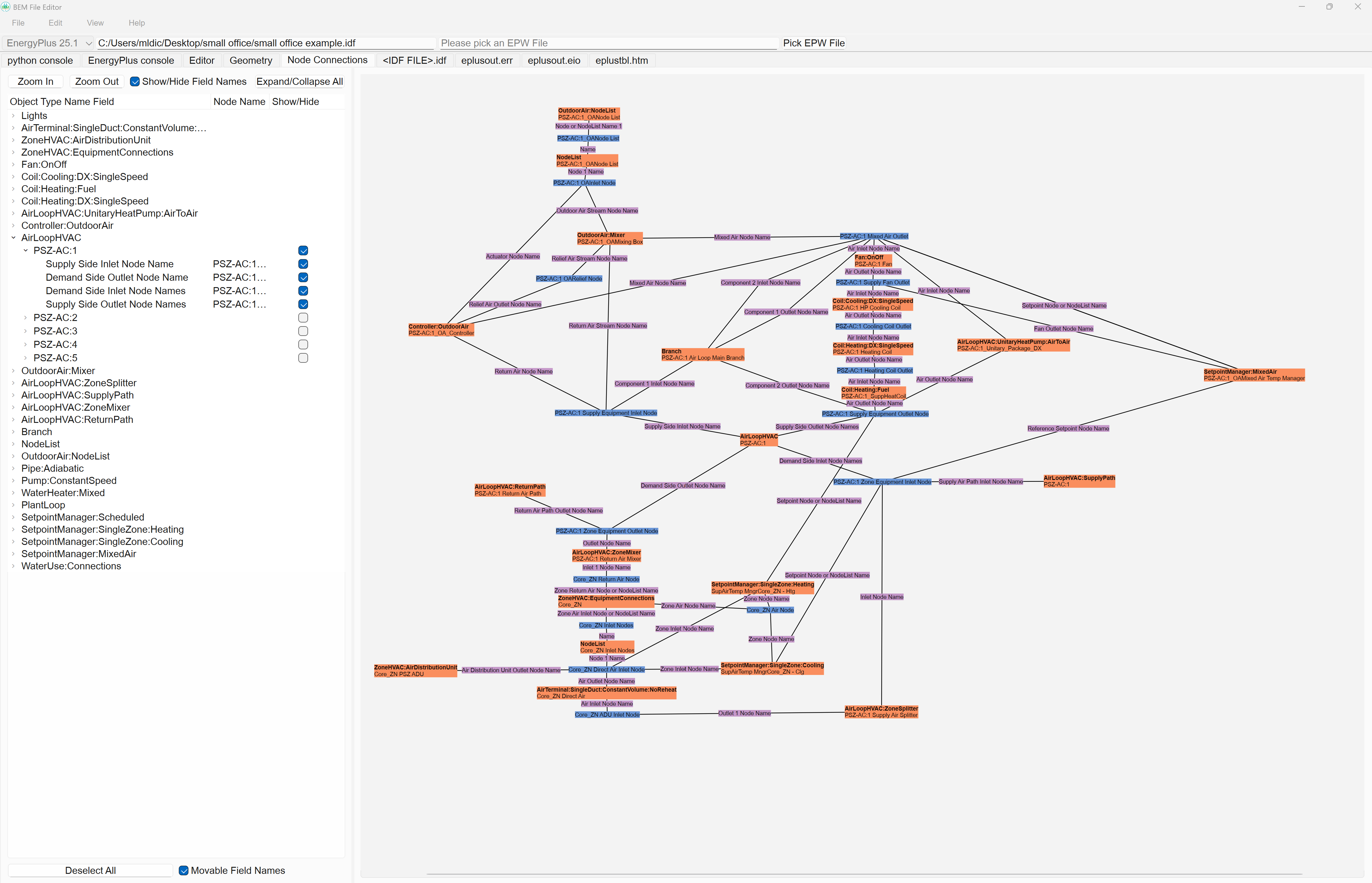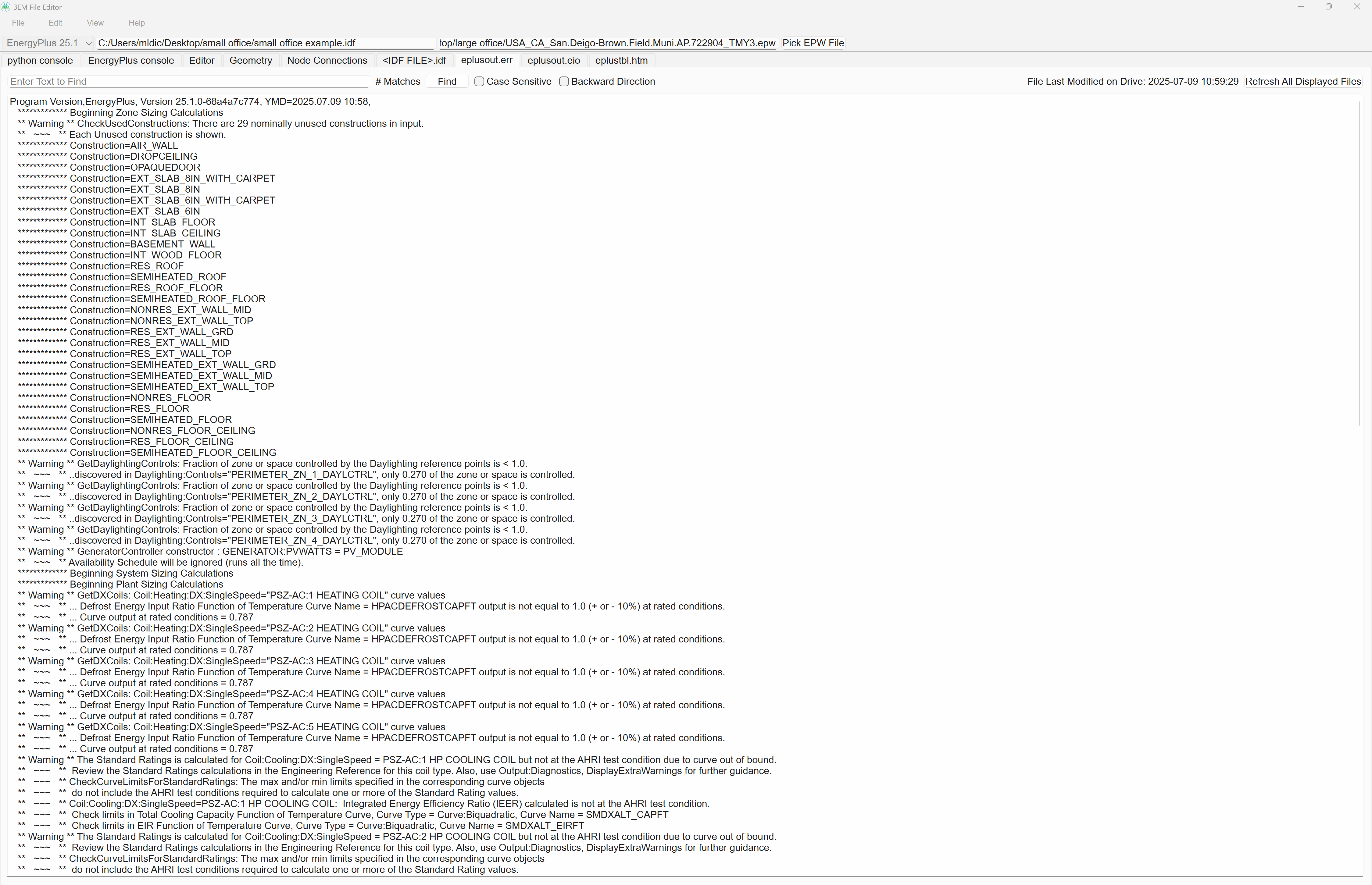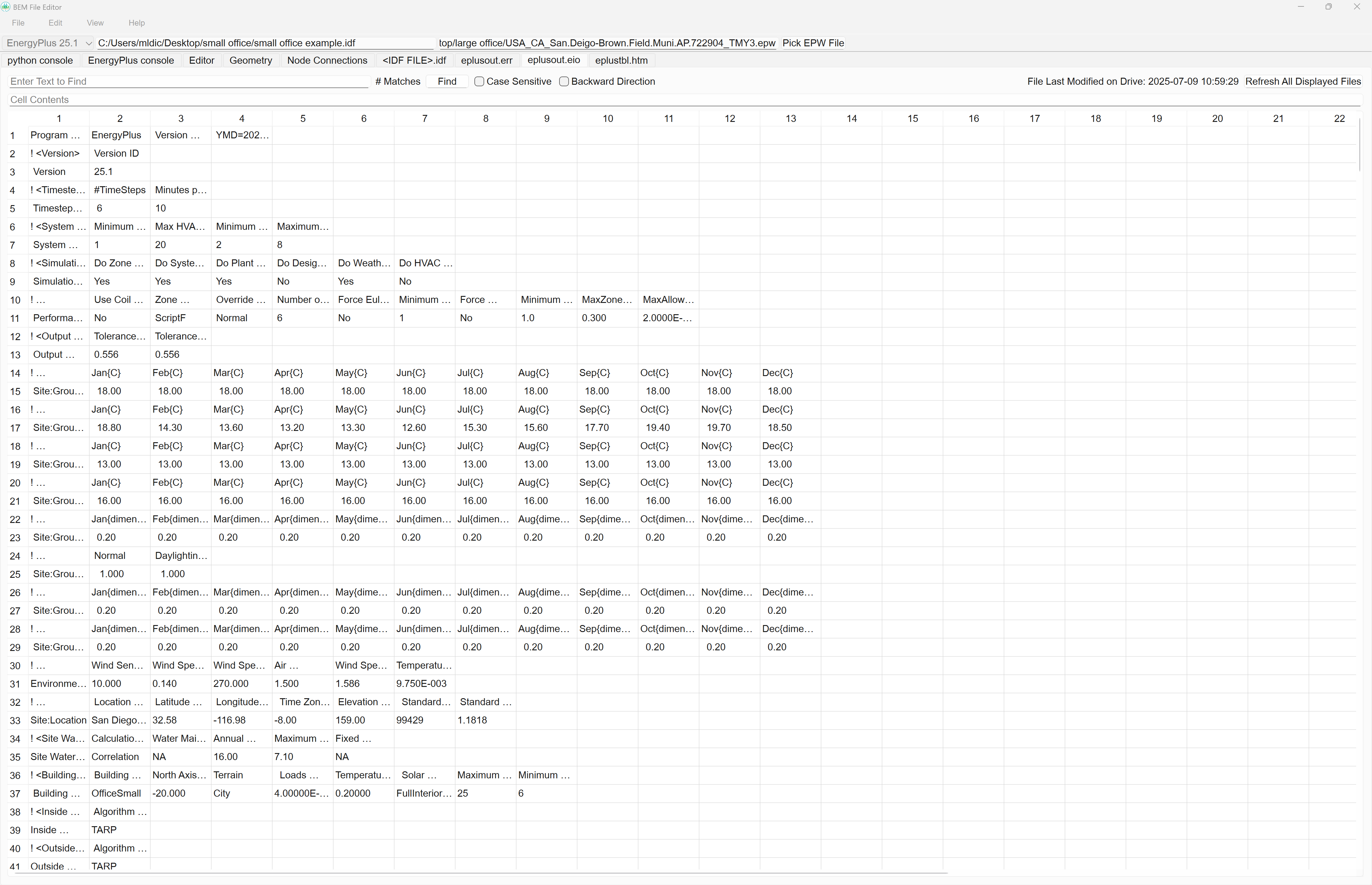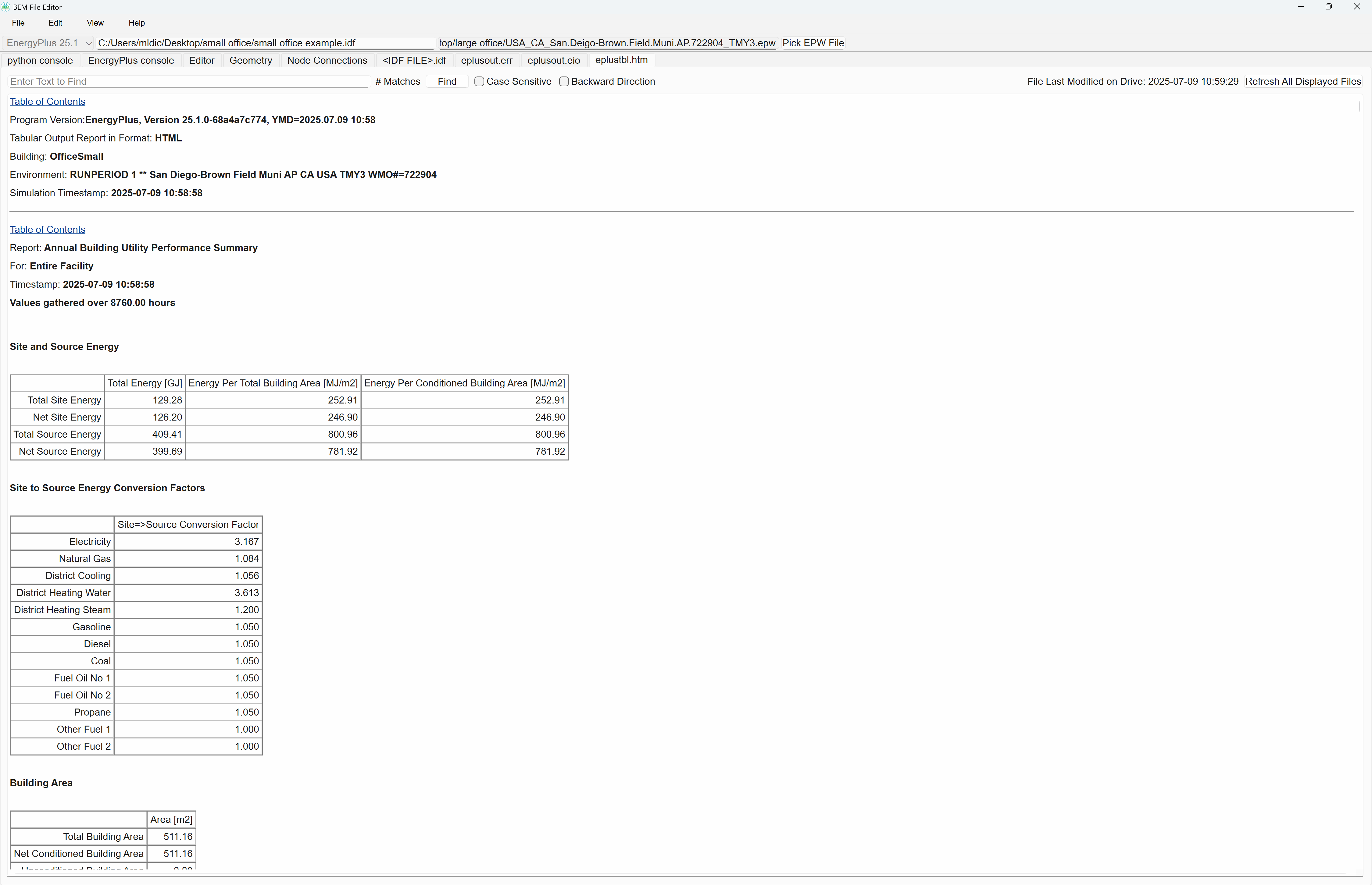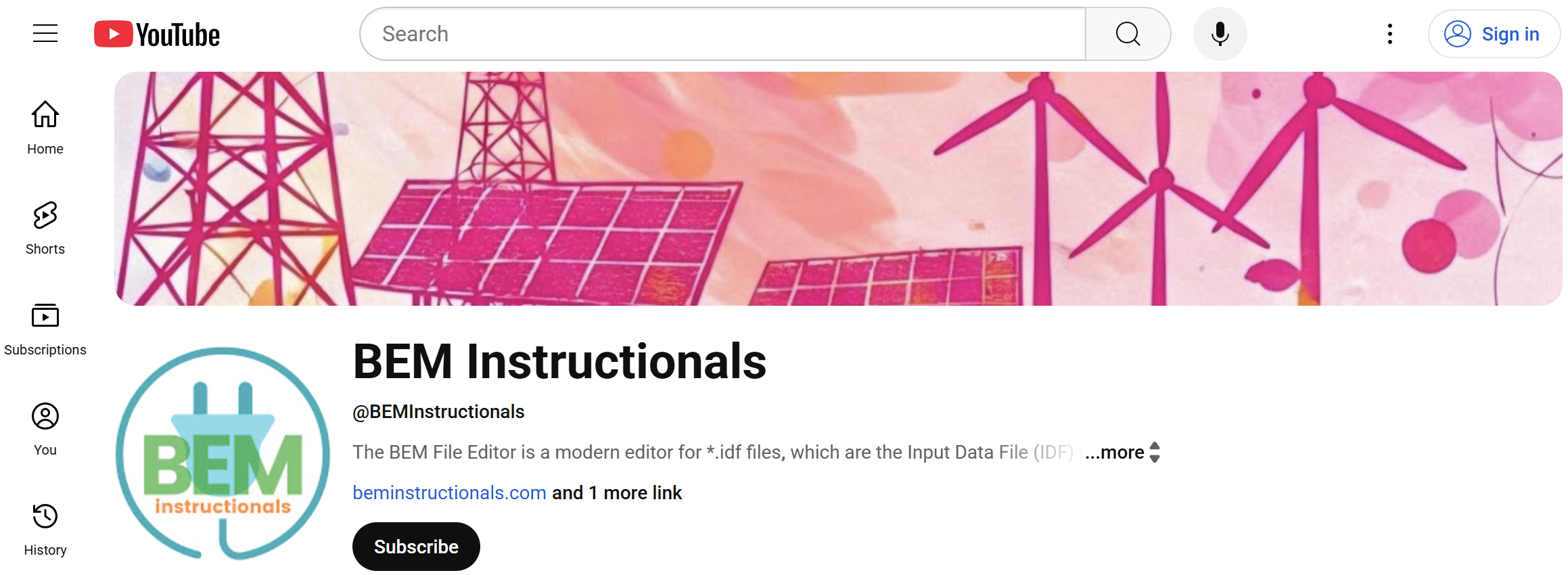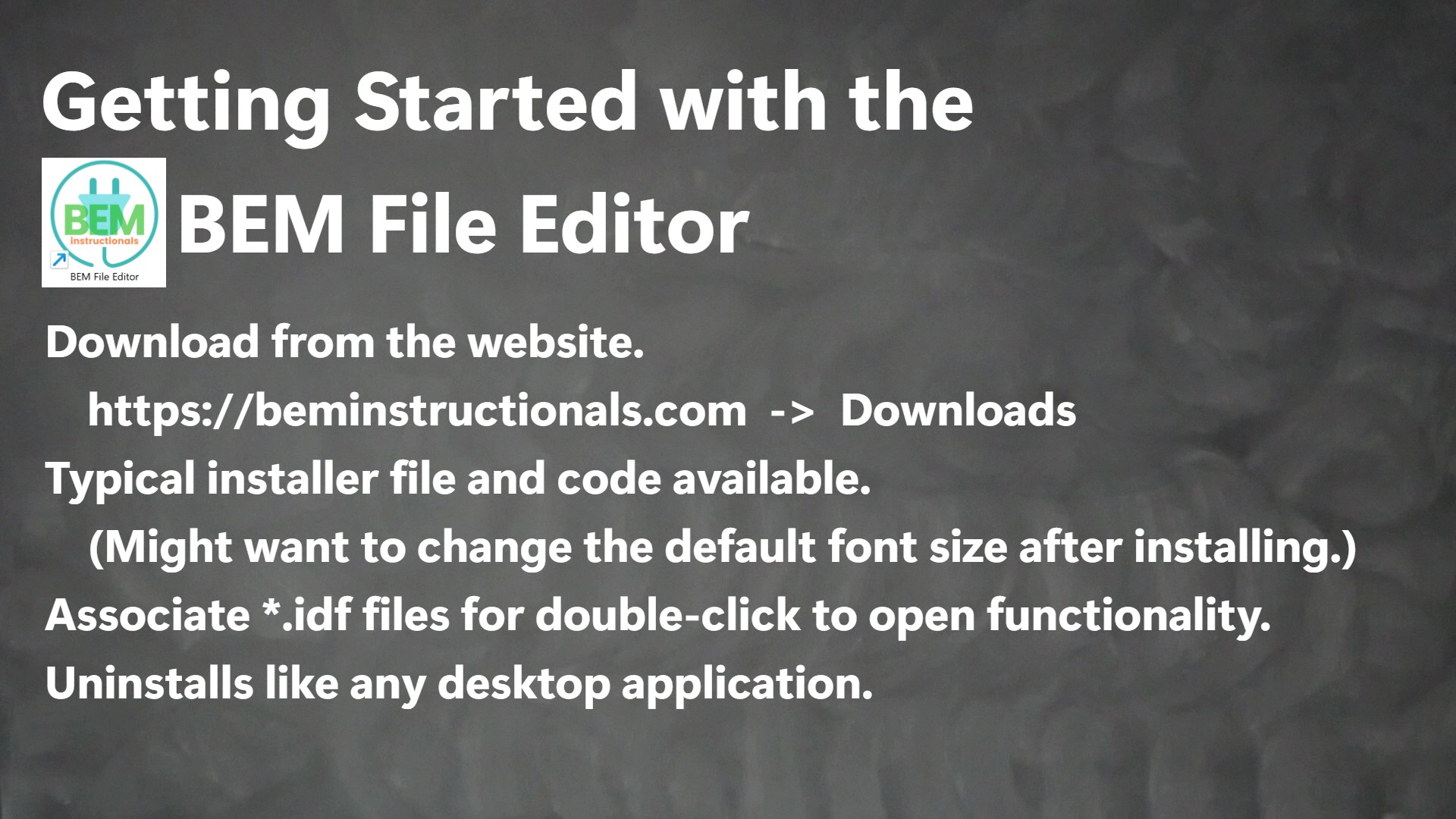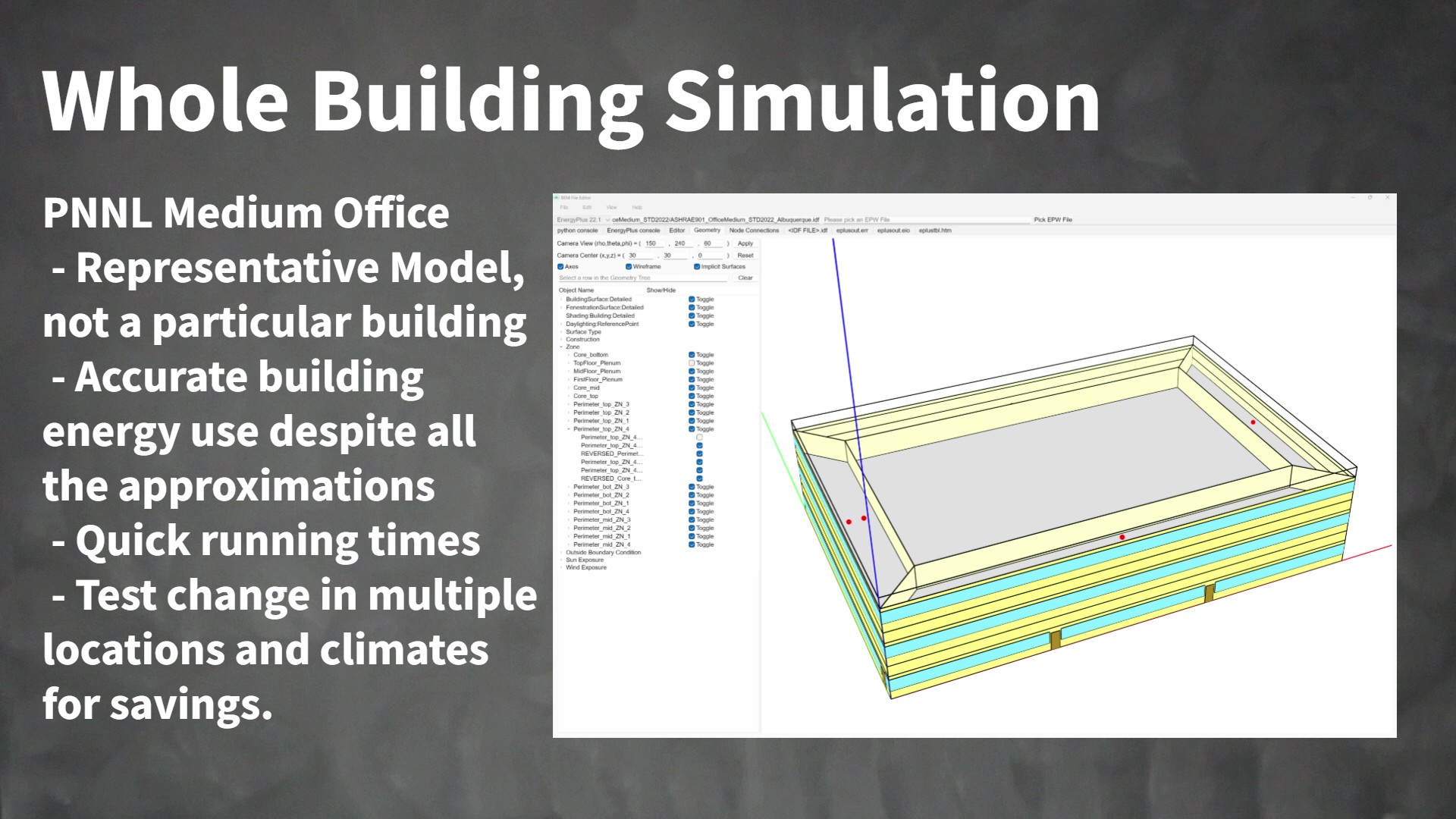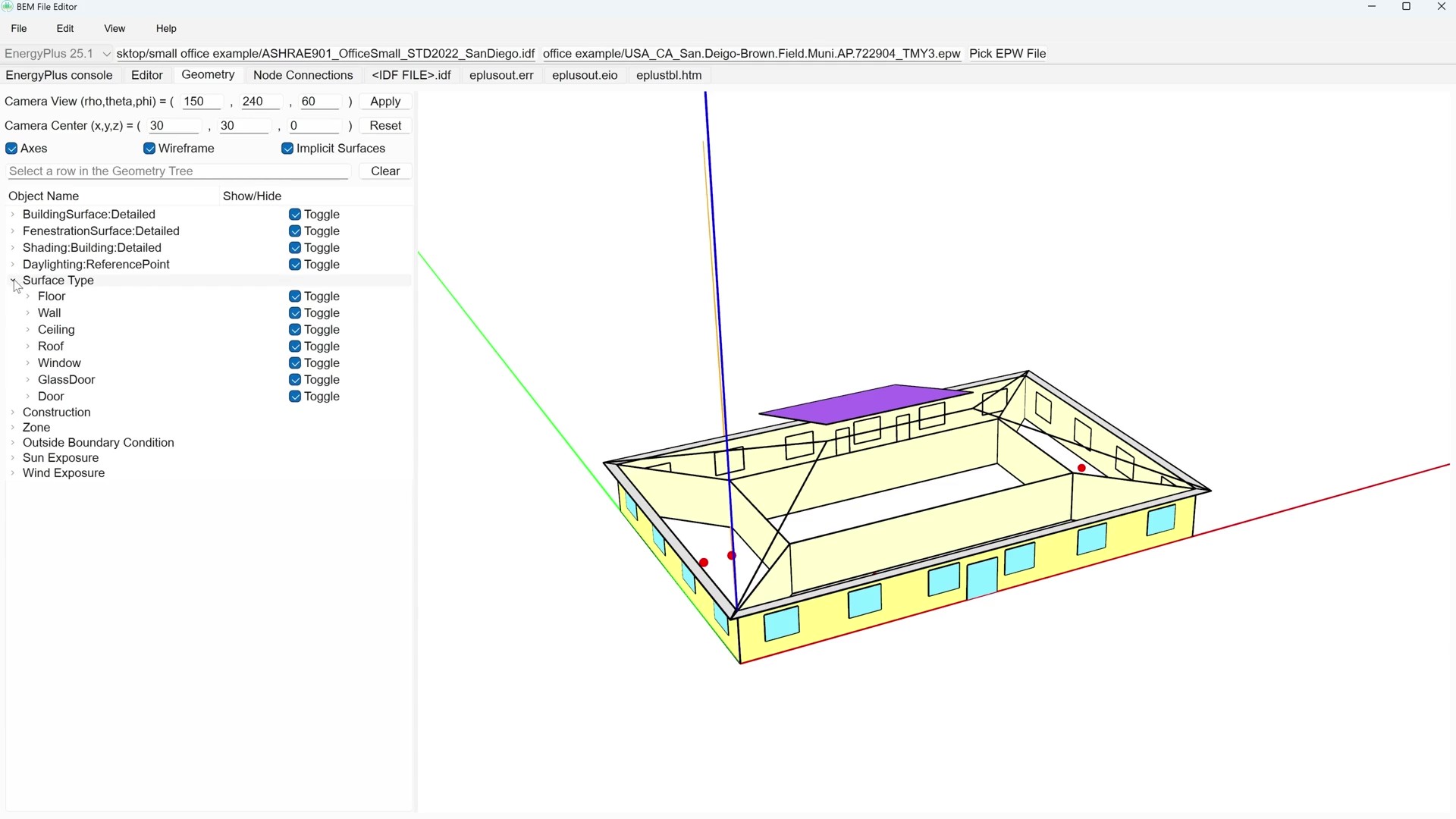The BEM File Editor is a modern editor for *.idf files, which are the Input Data File (IDF) files for the EnergyPlus whole building energy simulation program. The BEM File Editor installers do not contain any version of the EnergyPlus simulation program. Each version of EnergyPlus you want to use must be installed separately.
Why release the BEM File Editor and YouTube videos for free?
Very simple. I work as a consultant for EnergyPlus projects with the BEM File Editor and YouTube videos serving as free advertising. (See the BEM Instructionals Consulting section of this website or use mitchaldichter@beminstructionals.com to contact me directly.) There was a large upfront time investment to make the BEM File Editor, some code maintenance, and I pay a Code Signing Certificate (assures the user and OS that the software is safe) and other fees of about $1,000 annually, but the costs are well worth the amount of paid work they bring in. Plus, the YouTube videos demonstrate that I am a competent EnergyPlus modeler, while the BEM File Editor code shows that I'm a good programmer.
Tabs & Features
Licenses
- The BEM File Editor code is dual licensed under a BSD-3-Clause license and the GNU GPLv3. See the LICENSE file for details.
- The code is available on the BEM Instructionals GitHub repo.
- The BEM Instructionals logo is licensed under a Creative Commons Attribution-ShareAlike 4.0 International license.
- PySide6 is licensed under the GNU General Public License version 3.
The BEM File Editor was inspired by the IDF+ Editor created by Matt Doiron.
Downloads
| Installer for Version 1.5.0 | Run using Python without Installing | ||
|
Windows 11 x86_64 BEM-File-Editor-Setup.exe |
This option is useful for users with employers that limit what can be installed on their computer and for uncommon or older operating systems.
|
||
Consulting
I work as a consultant in the energy industry creating EnergyPlus models for clients and automating the generation of thousands to millions of building models, their simulation, and performance analysis. If you need EnergyPlus modeling for a project, support learning EnergyPlus, or as needed technical assistance, you can contact me at mitchaldichter@beminstructionals.com.
Why pay for EnergyPlus consulting?
- EnergyPlus has a steep learning curve and the time investment to have an engineer learn EnergyPlus is costly, especially if there isn't consistent EnergyPlus modeling needed on future projects. There might not even be enough person-hours available for EnergyPlus training while still completing the project on time.
- Even for experienced EnergyPlus modelers, creating or modifying a model is tedious. Most engineers simply do not want to do it.
- Trying to model a new or uncommon technology in EnergyPlus that doesn't quite fit into any existing object class is another level of difficulty. It can be done with things like co-simulation and a Python equipment model, but that is not without problems.
My rates are variable, ranging from a typical consulting fee to as low as the hourly cost of hiring me as an employee. On demand support with no set amount of weekly hours is the most expensive, while a guaranteed number of weekly hours working on a project for months is the least expensive. The value of a stable income is absolutely reflected in my hourly rate.
Learning Resources
BEM Instructionals YouTube Channel
Example IDFs and Documentation in the EnergyPlus Installation Directory
The "ExampleFiles" directory contains about 750 IDF files that showcase how to use particular objects in an EnergyPlus model. The intent is for each example IDF to provide a working example that you can then migrate to your own IDF file. Unfortunately, finding the IDF file you want can be difficult. The name of the IDF file is useful, as well as the ExampleFiles.html and ExampleFiles-ObjectsLink.html files, but they are not exhaustive in their summaries. Also, some object types do not have an example file, such as the GroundHeatTransfer:Basement:XFACE object type.
To make finding an example IDF file with particular object(s) easier, I made a CSV that has the number of each EnergyPlus object type in each example IDF file. You can download the ExampleFiles_object_counts.csv and open with Microsoft Excel, or any other CSV viewer, to find the example IDF files with the objects you want to use in your own model. Each row of the CSV is the name of an IDF example file, and each column is an object type name. The number that appears in a row and column is the number of the column's object type in the row's IDF file. A cell is empty, rather than "0" for the cell contents, if the column's object type does not exist in the row's IDF file. Note: Only object types that exist in at least one example IDF file are in the top row. An object type that does not appear in any example IDF file, such as the GroundHeatTransfer:Basement:XFACE object type, will not appear in the top row.
Last, but not least, the "Documentation" directory has files like EngineeringReference.pdf, GettingStarted.pdf, InputOutputReference.pdf, and others. The most useful file overall is probably the InputOutputReference.pdf, but it's more of a reference. Some of the other resources are more helpful when first starting to use EnergyPlus.
UnmetHours.com
Unmet Hours is a forum for the building energy modeling community, mostly focusing on EnergyPlus and programs that use EnergyPlus. If you have a question, you can search for the answer, or post your own question. If you want me to receive an email notification when you post something, include "@Mitchal Dichter" in the text without the quotes. You'll know it worked if the @Mitchal Dichter text turns blue shortly after you post.
Prototype Models Created by the Government
For years, the DOE has funded the creation and updating of building models in EnergyPlus. These building models cover a variety of commercial and residential building types, meant to be representative of a significant portion of all existing buildings in the US. The models are updated periodically to simulate energy savings associated with changes in energy codes and standards.
For researchers, the models are useful as base models to investigate changes in construction, equipment, and controls on energy use and utility bills. Two of the most useful parts of each building model are the overall geometry and schedules specified in the IDF file. Researchers can have confidence that the parts of the model that can't easily be calculated or looked up, such as the behavior of people in the building and thermostat setpoints, were rigorously investigated for each building type.
DOE Commercial Reference Buildings
The above linked site has prior versions of the building models, split up into Pre-1980, Post-1980, and New Construction last updated in 2012. The PNNL models built upon the DOE models and added some new building types.
References and citations can be found as comments in the IDF files opened with a basic text editor.
PNNL Prototype Building Models
The most recent version of the building models at the above link have three categories and multiple building types.
The IDFs were upgraded to EnergyPlus version 24.2 and then the OpenStudio Application 1.9.0 was used to displayed them.
Some IDFs had the text "For: " removed from some Schedule objects in order to be imported into the OpenStudio Application.
References and citations can be found as comments in the IDF files opened with a basic text editor.
You'll notice some of the building geometries in the models have floating floors, missing rooms, or both. This was intentional to speed up simulation time by explicitly modeling a single thermal zone and then using the Multiplier field in some objects to account for all the duplicate thermal zones as if they were all explicitly modeled. It works, but can be tricky to get right, such as when using cooled and heated water to condition air at the terminal unit in multiplied zones. Accounting for total air flow on a shared fan, or extra water flow for a pump, can be difficult to specify correctly in the EnergyPlus model.
|
Commercial Small Office 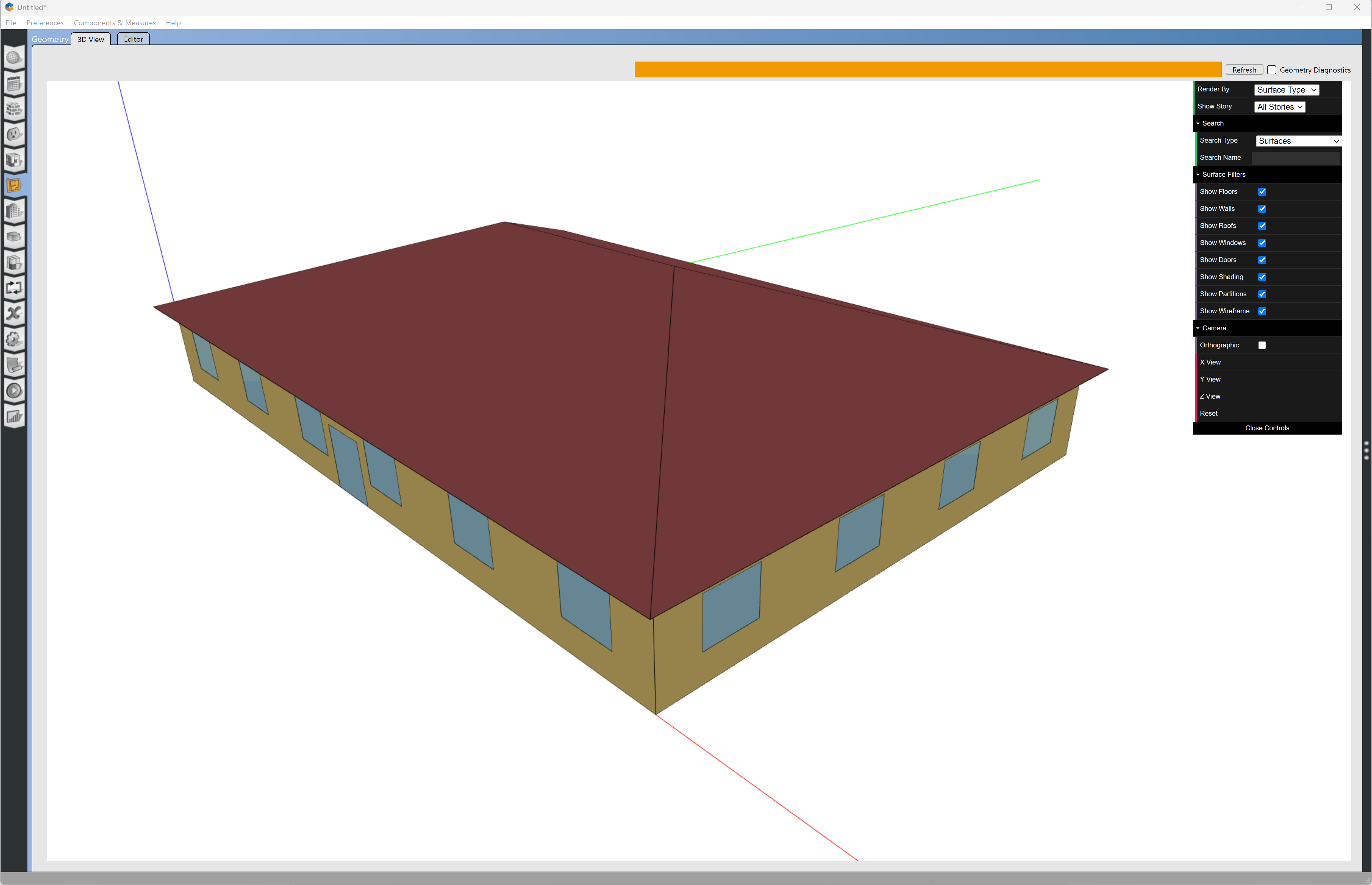
|
Commercial Medium Office 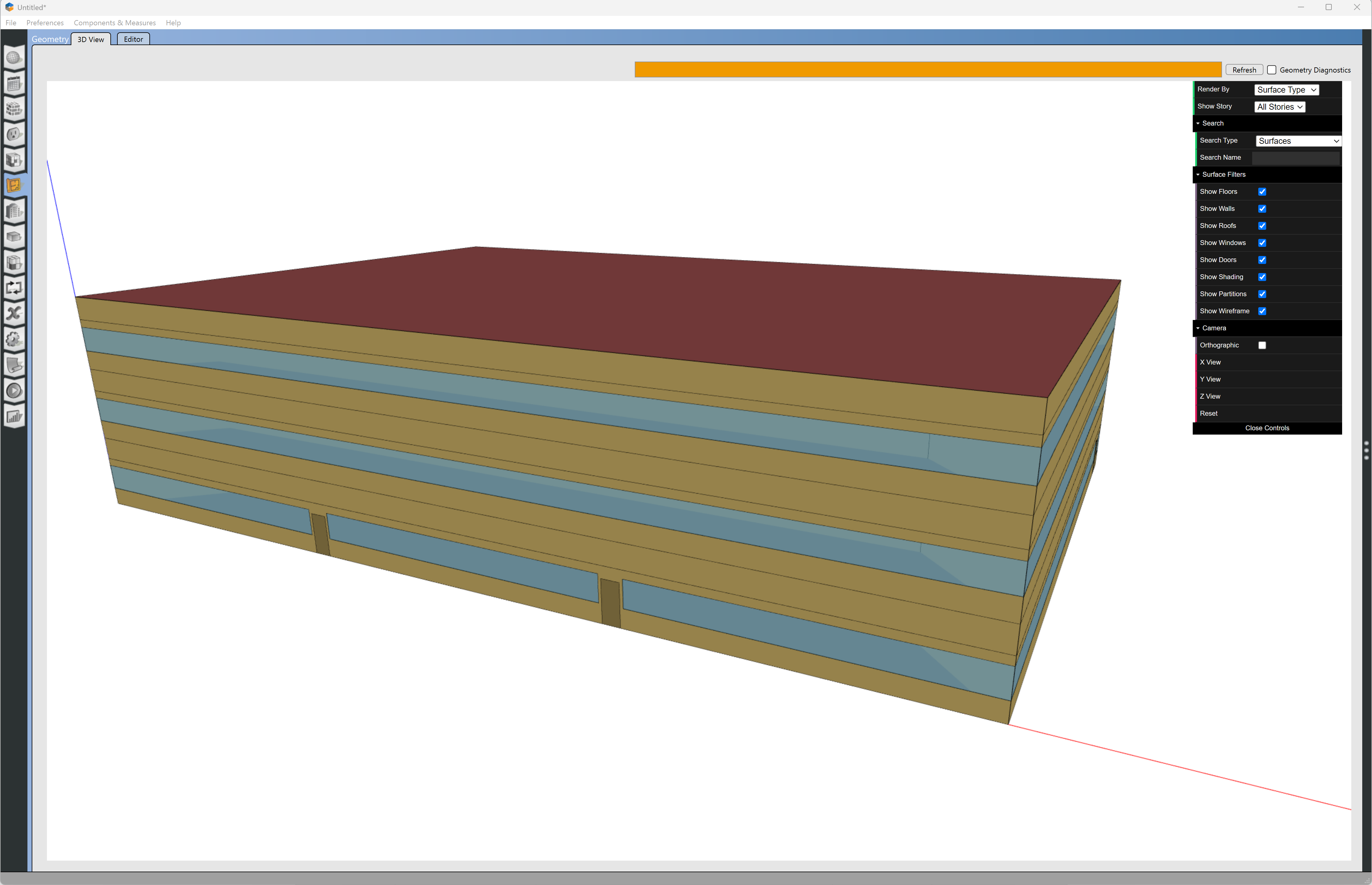
|
Commercial Large Office 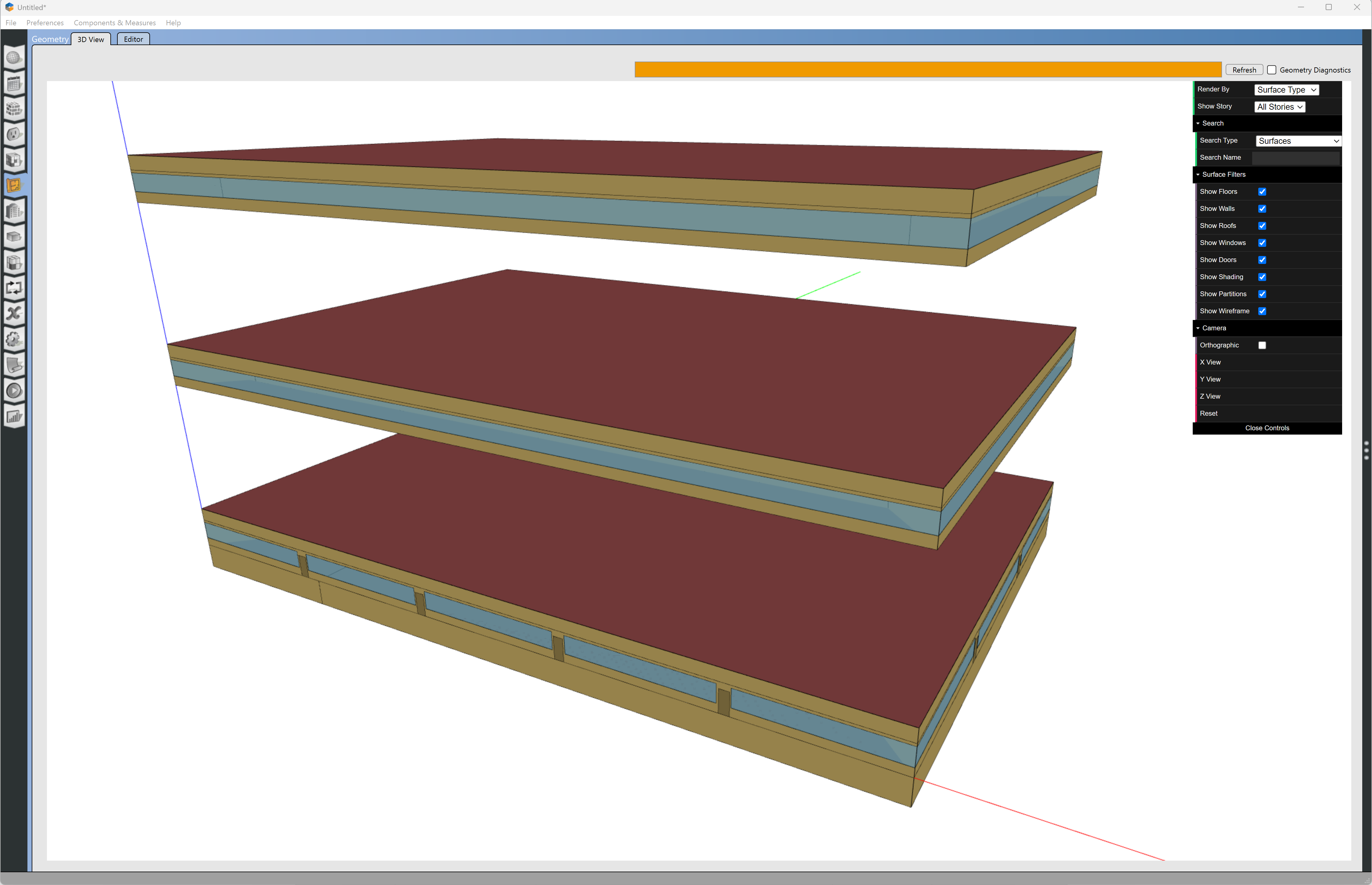
|
Commercial Stand-alone Retail 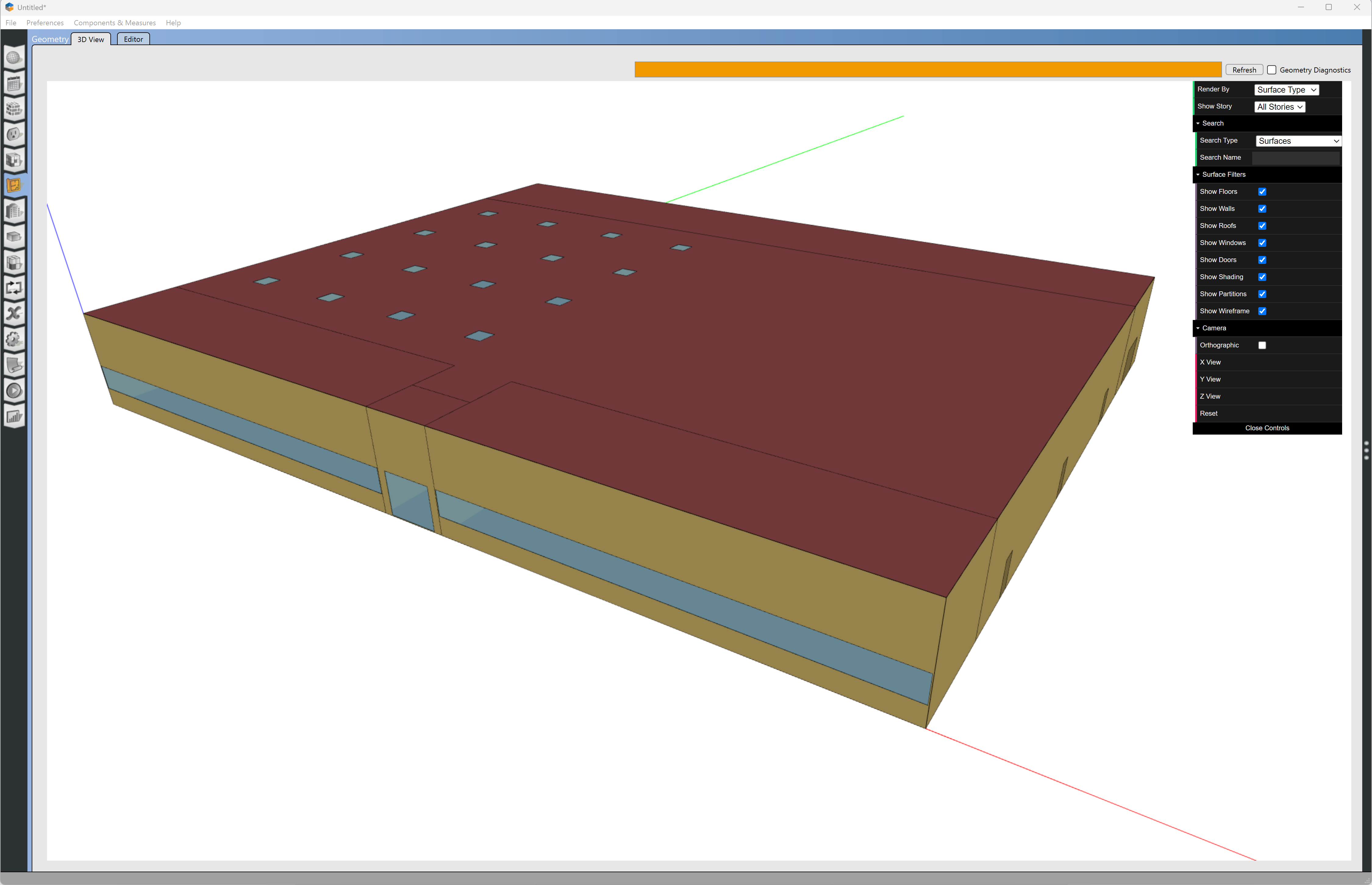
|
|
Commercial Strip Mall 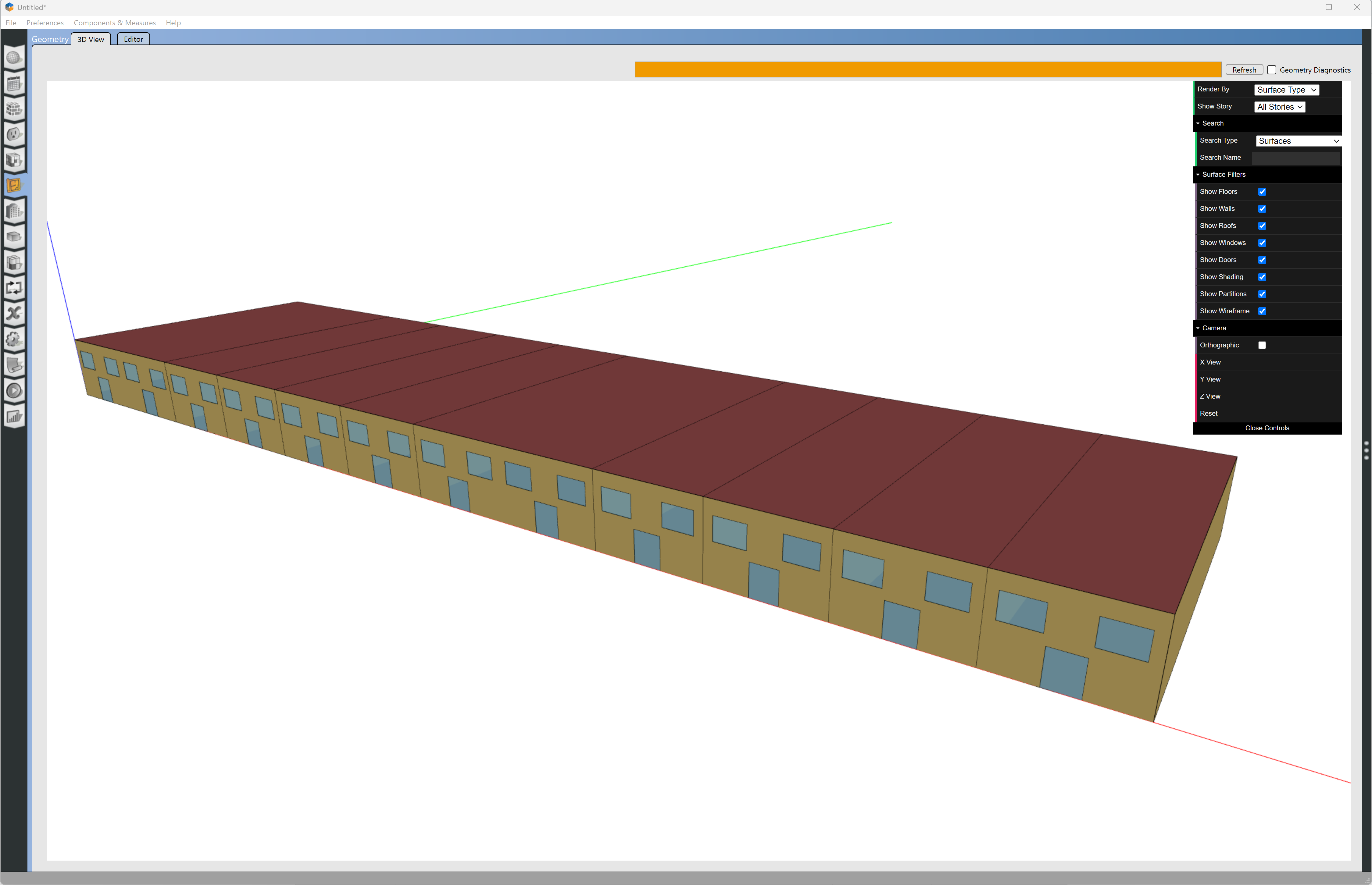
|
Commercial Primary School 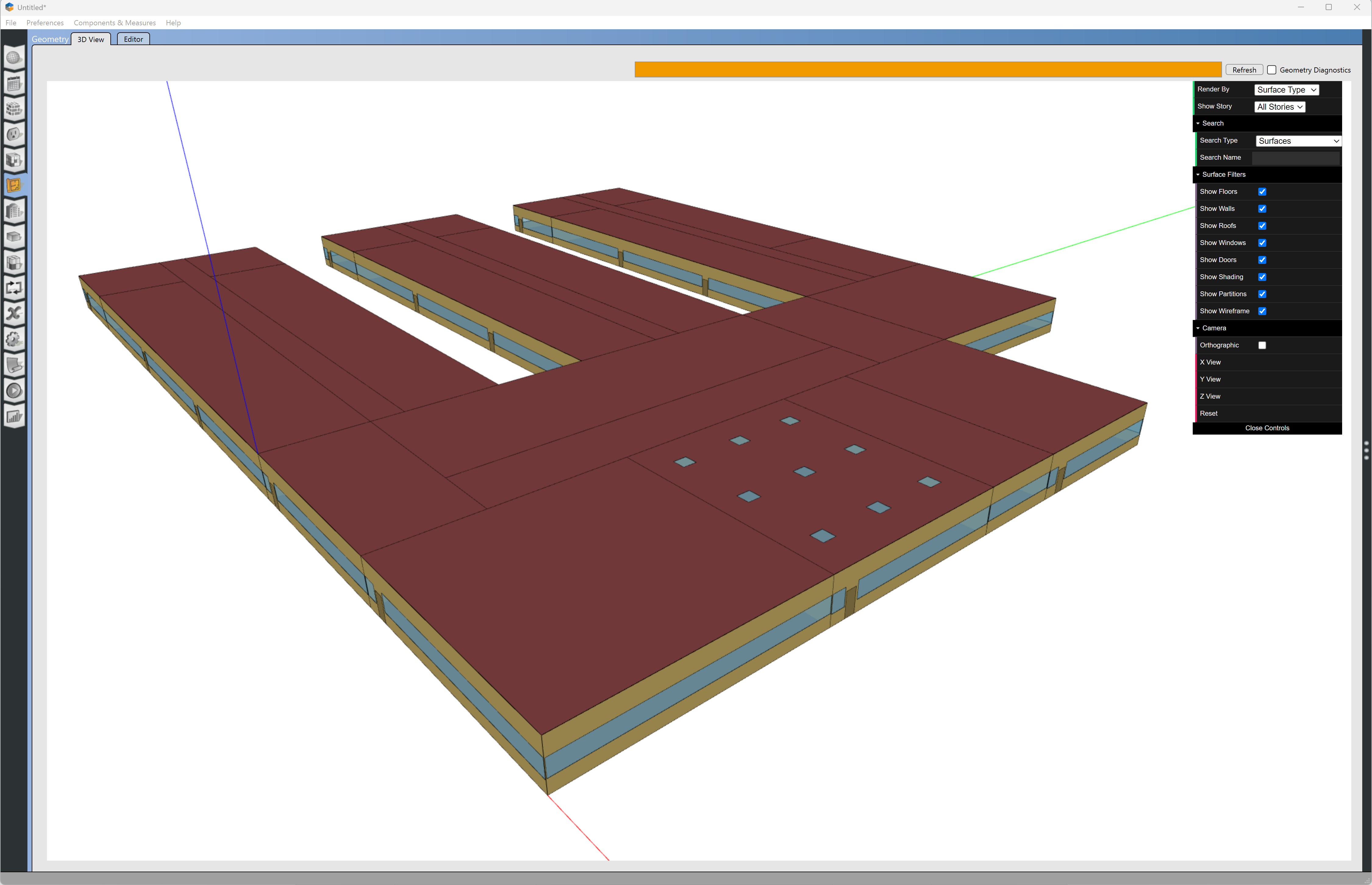
|
Commercial Secondary School 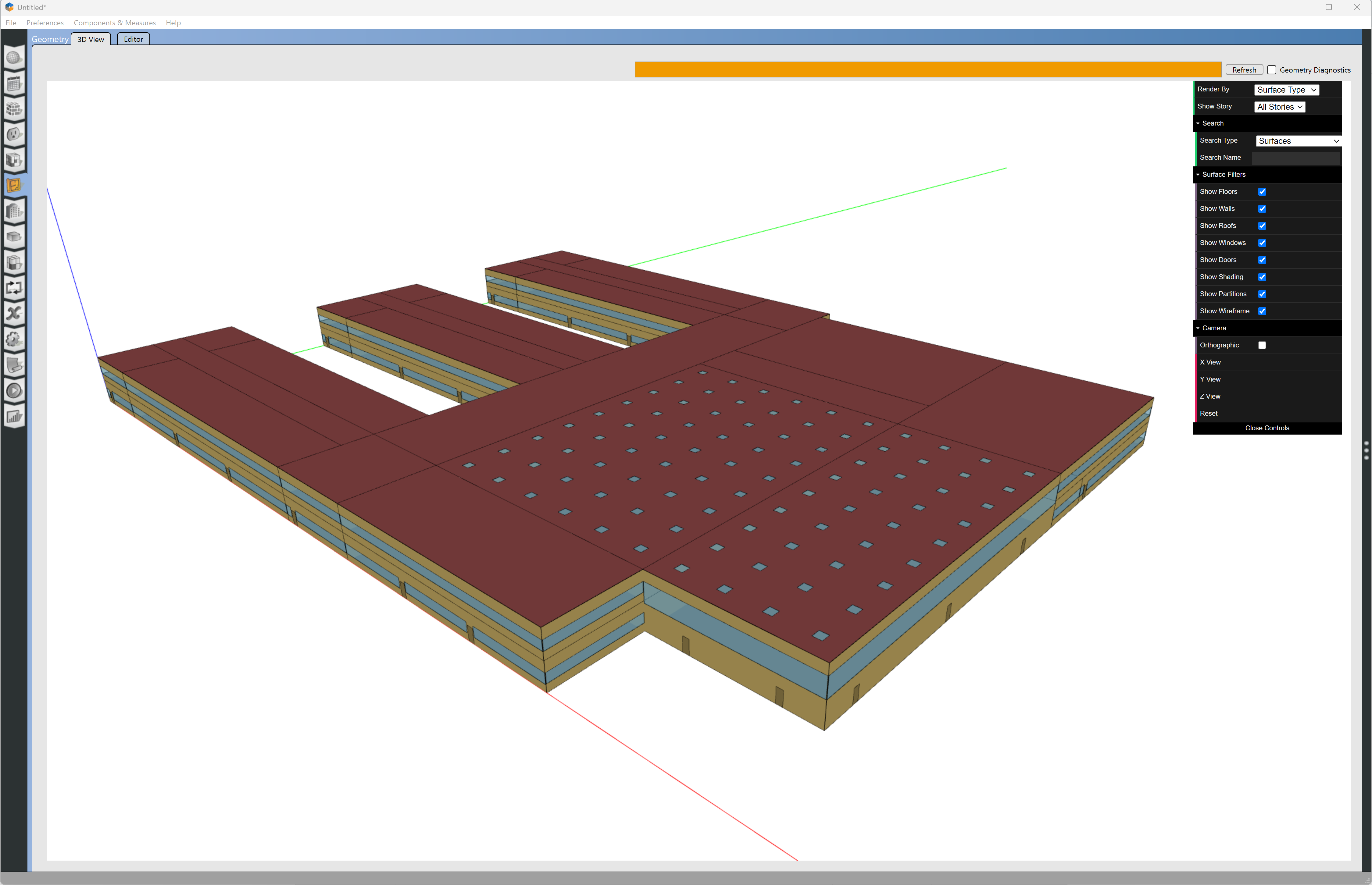
|
Commercial Outpatient Healthcare 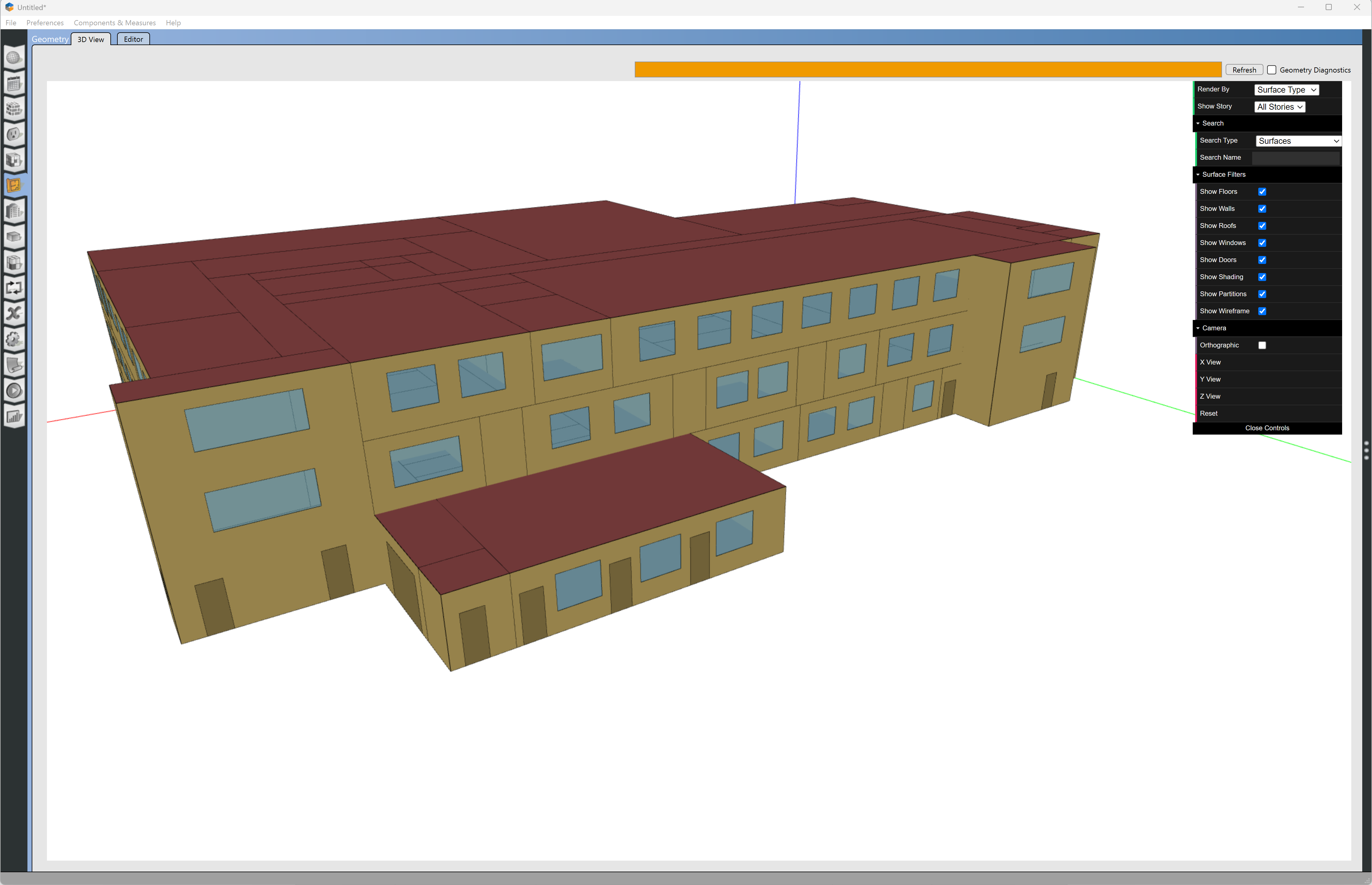
|
|
Commercial Hospital 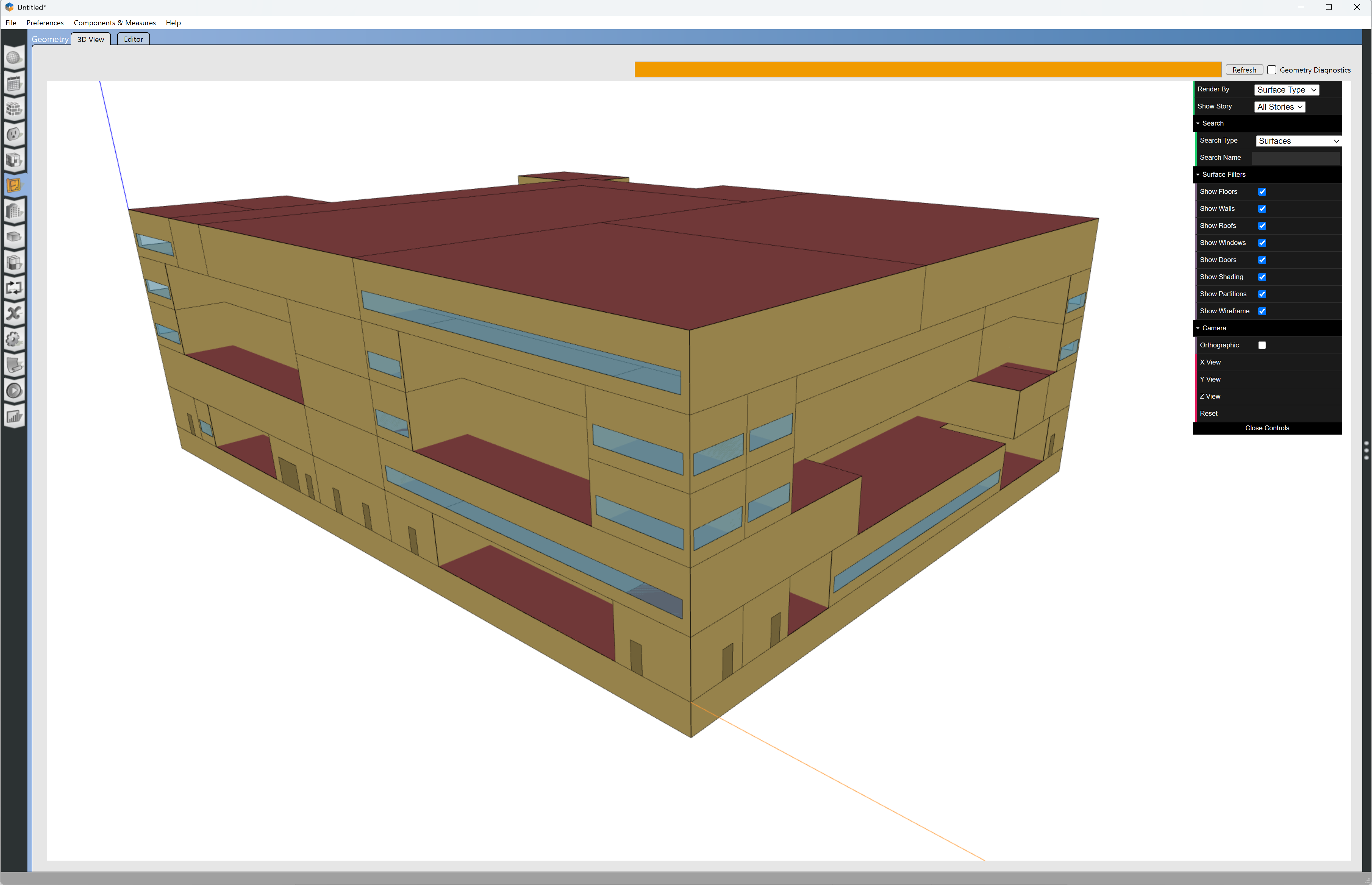
|
Commercial Small Hotel 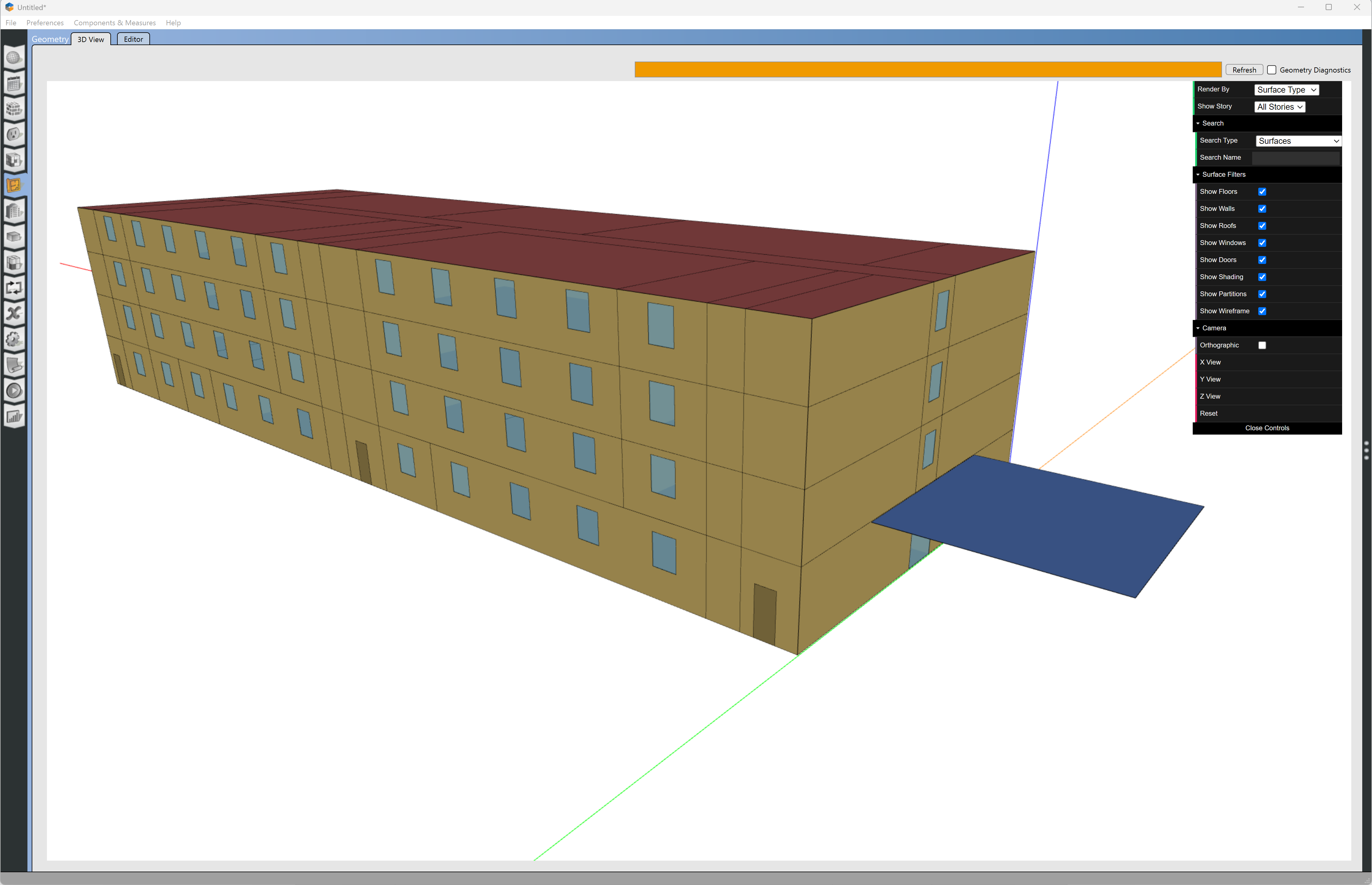
|
Commercial Large Hotel 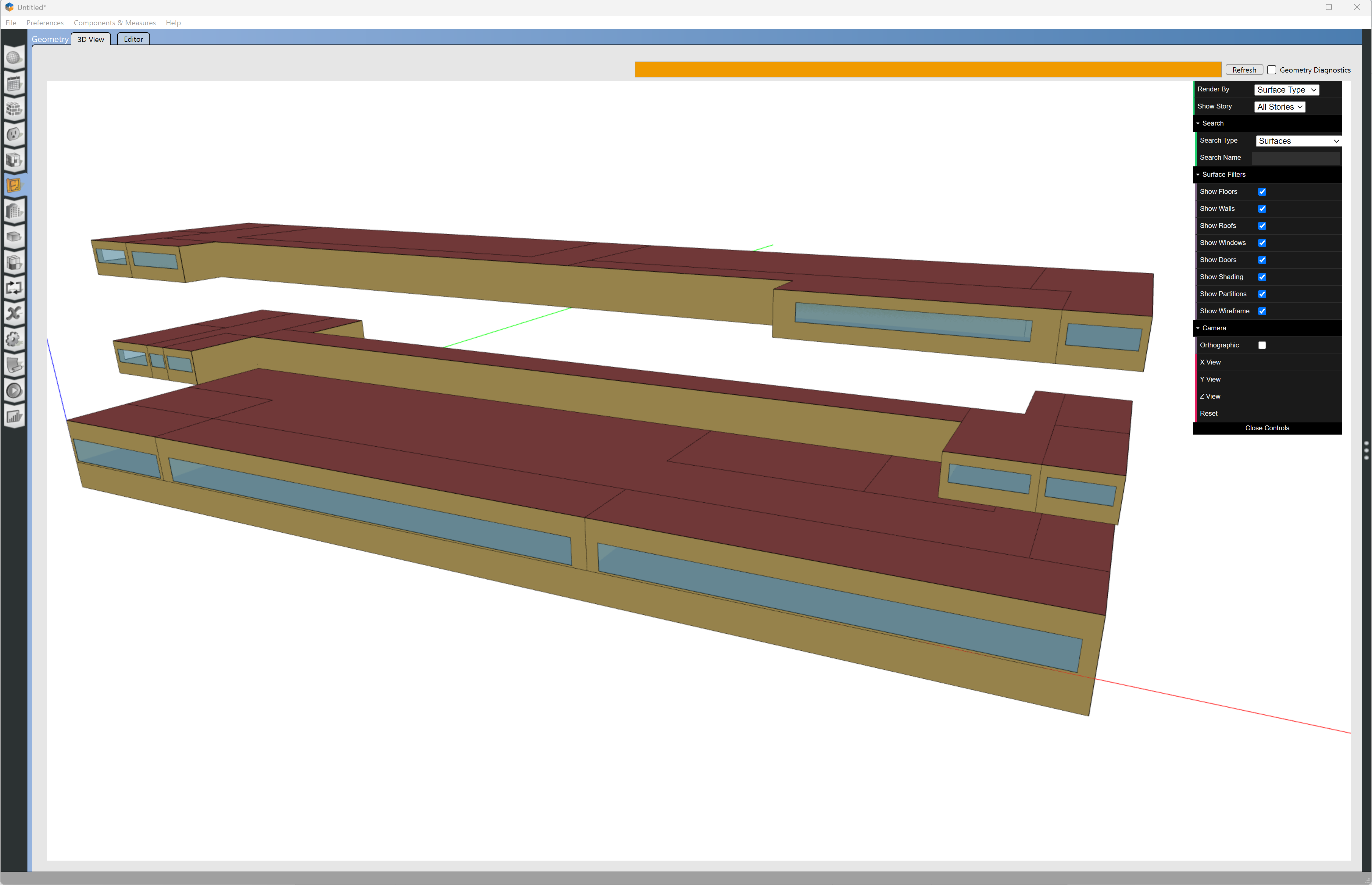
|
Commercial Warehouse (non-refrigerated) .png)
|
|
Commercial Quick Service Restaurant 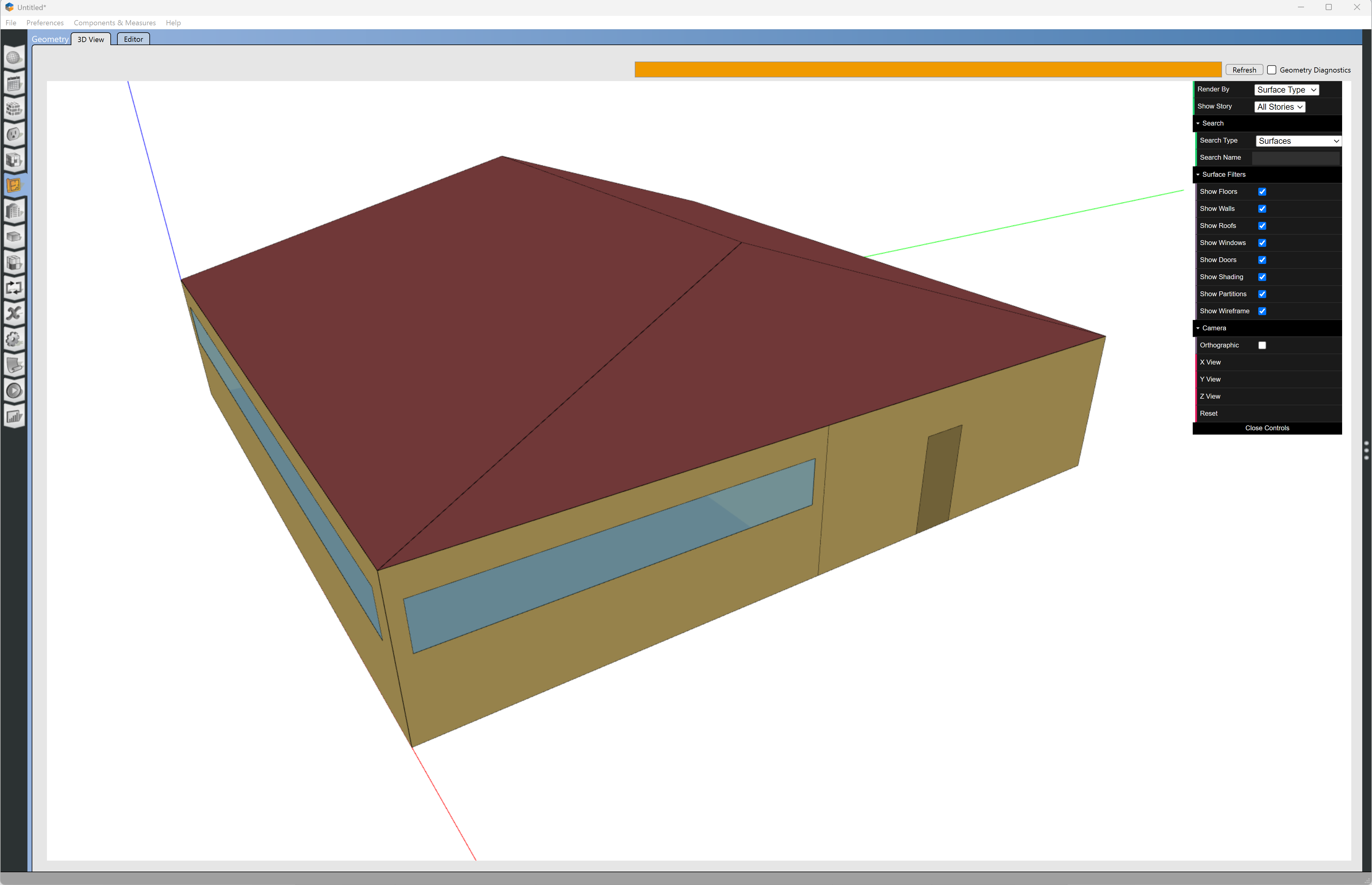
|
Commercial Full Service Restaurant 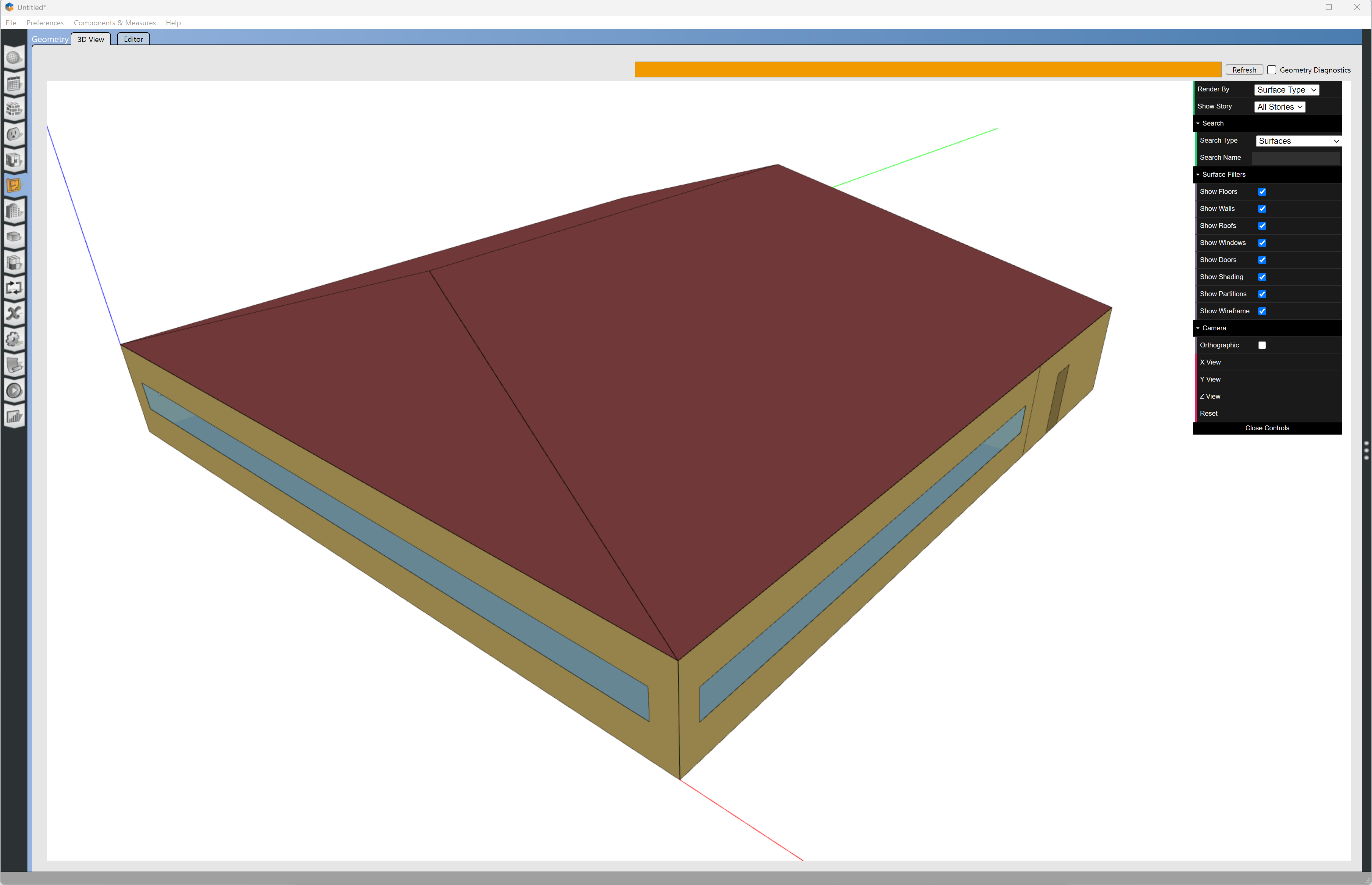
|
Commercial Mid-rise Apartment 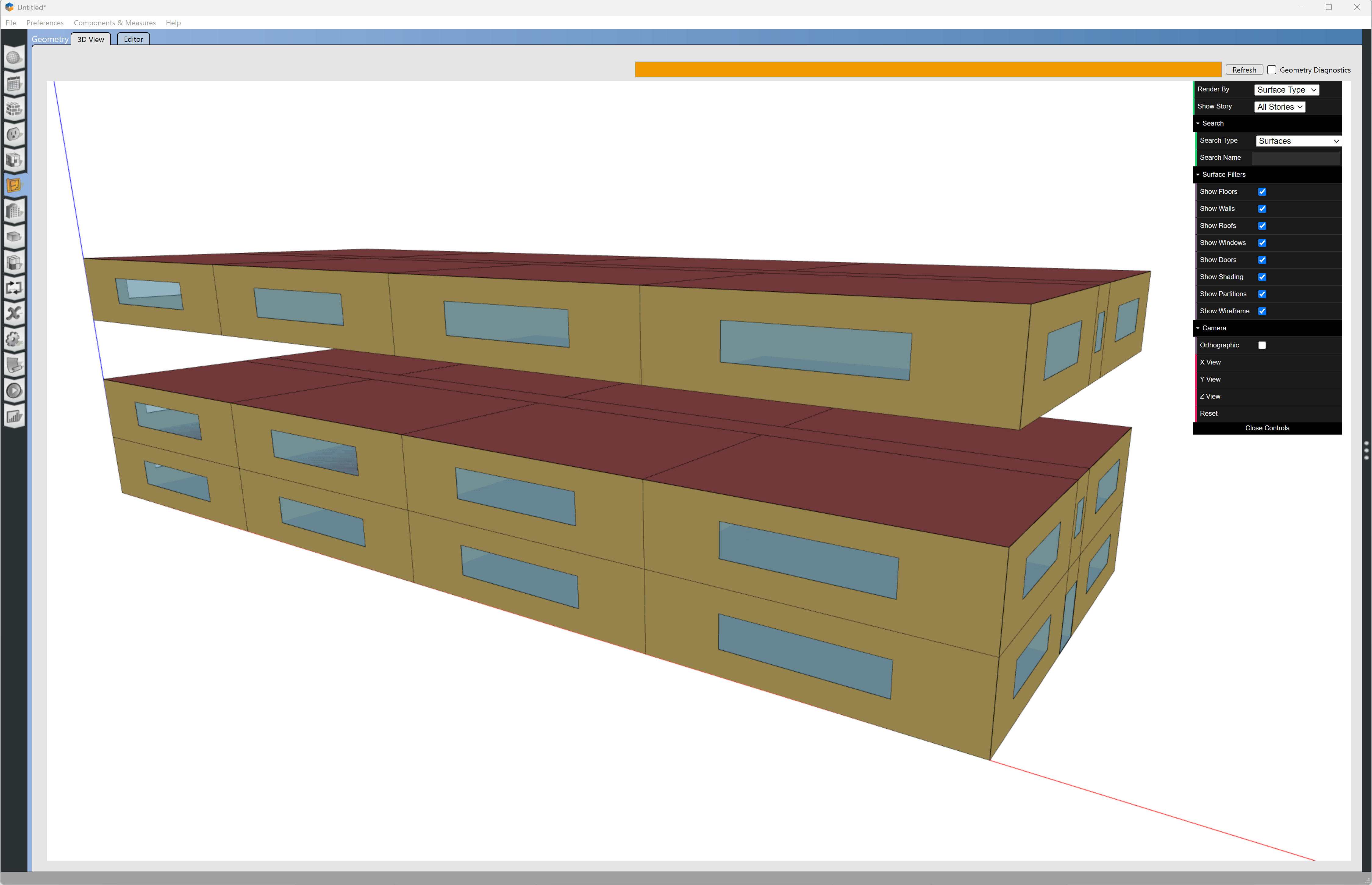
|
Commercial High-rise Apartment 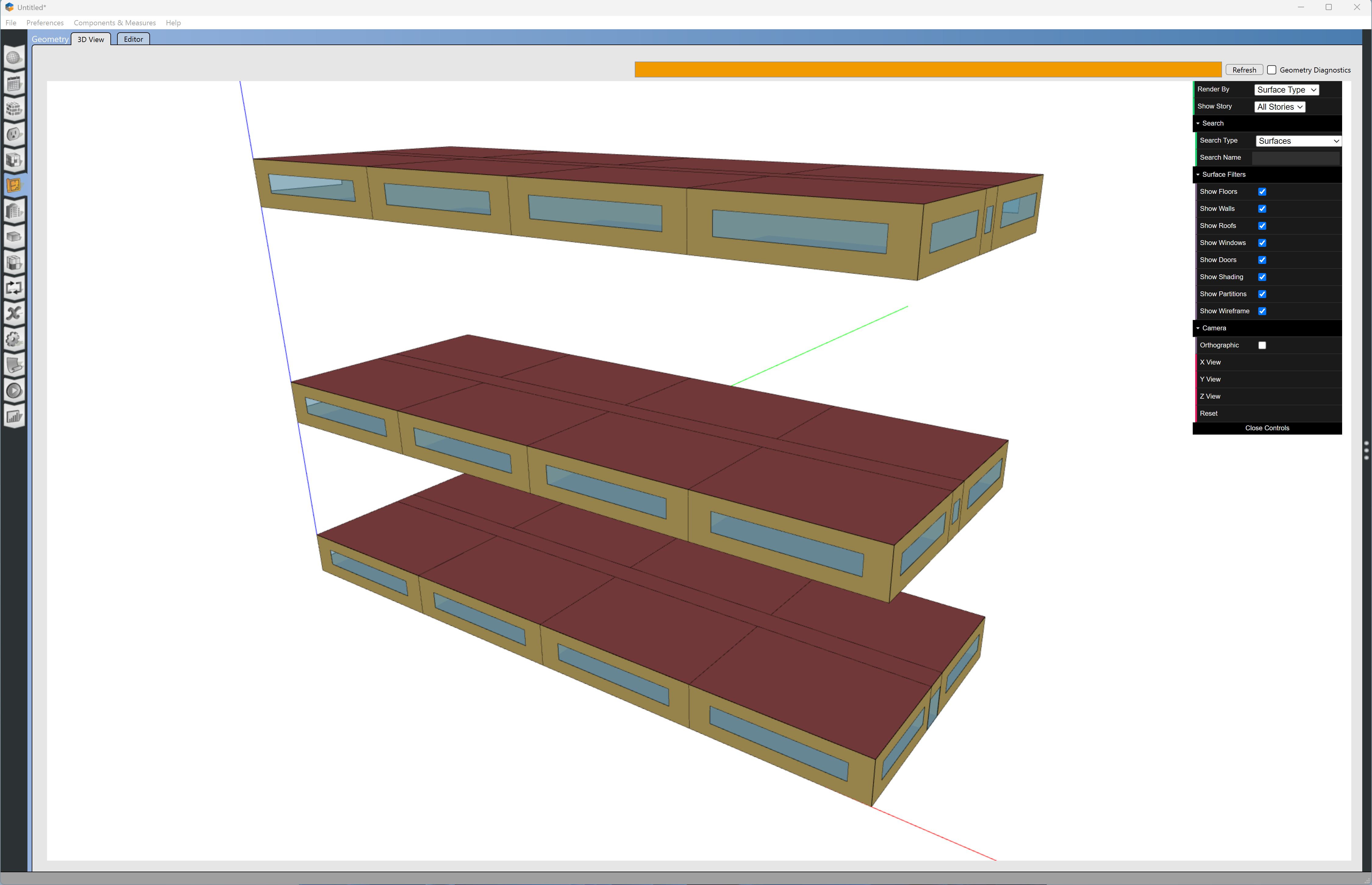
|
Single-family detached house with slab
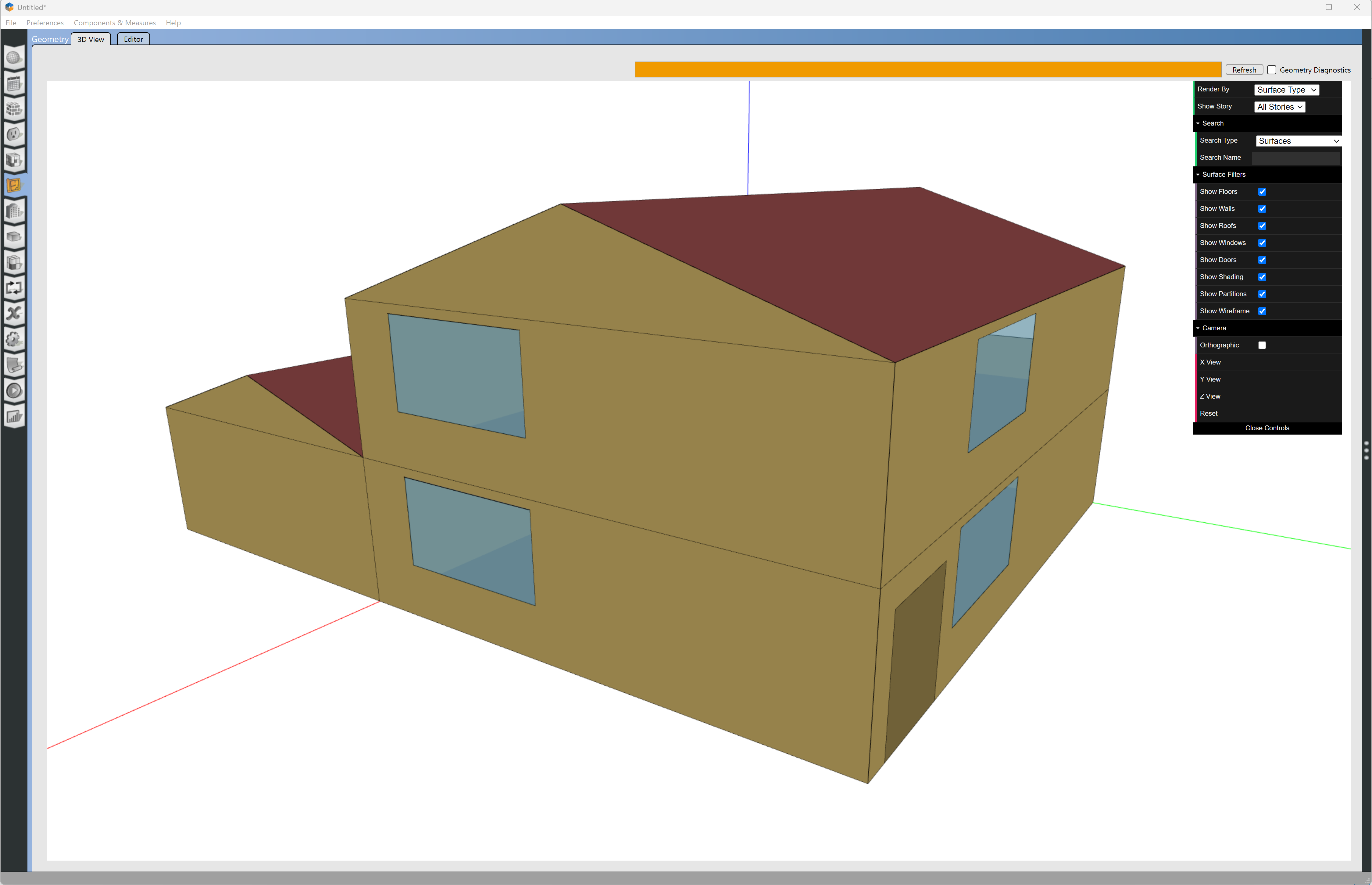
|
Single-family detached house with crawlspace
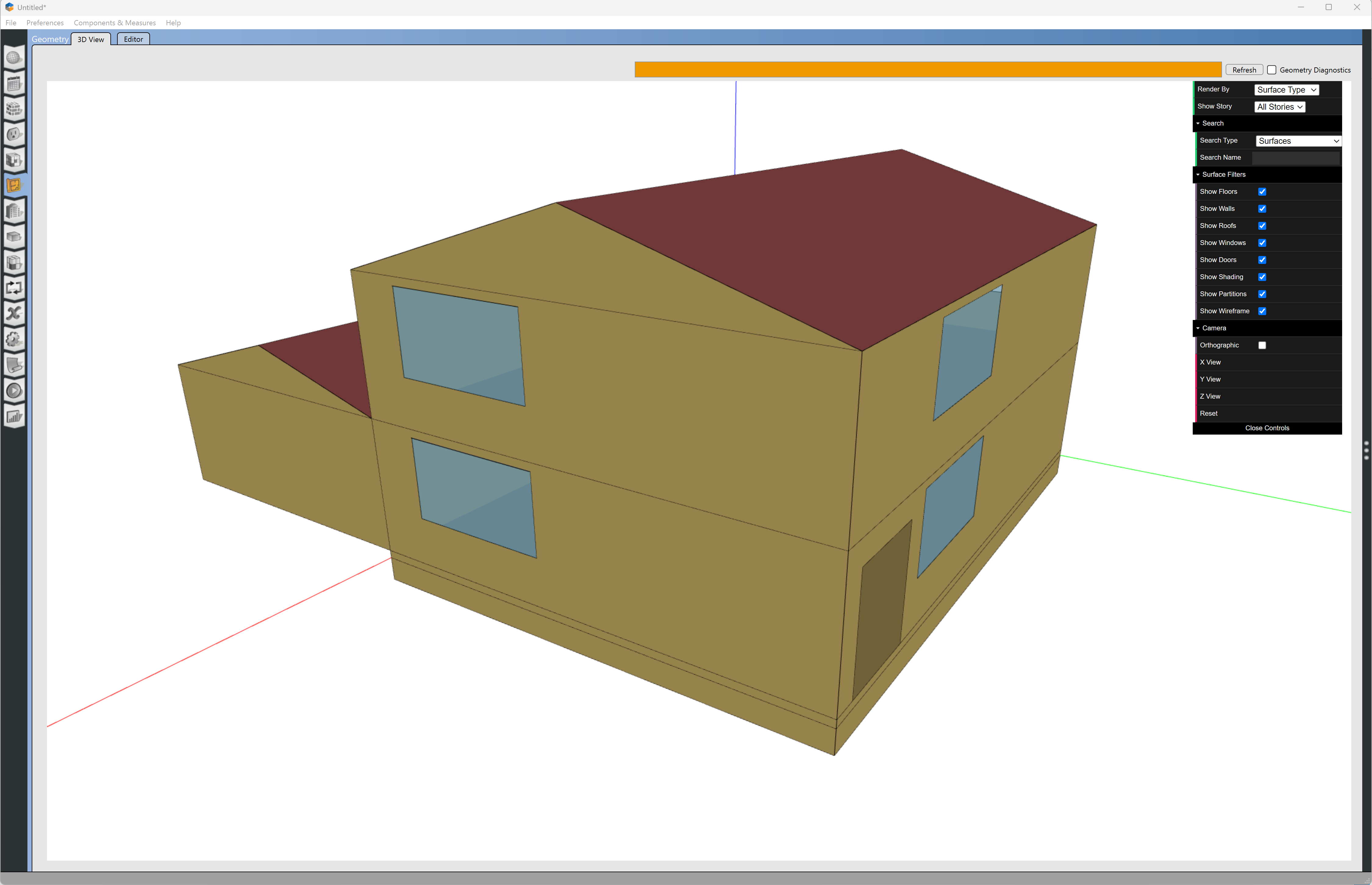
|
Single-family detached house with basement
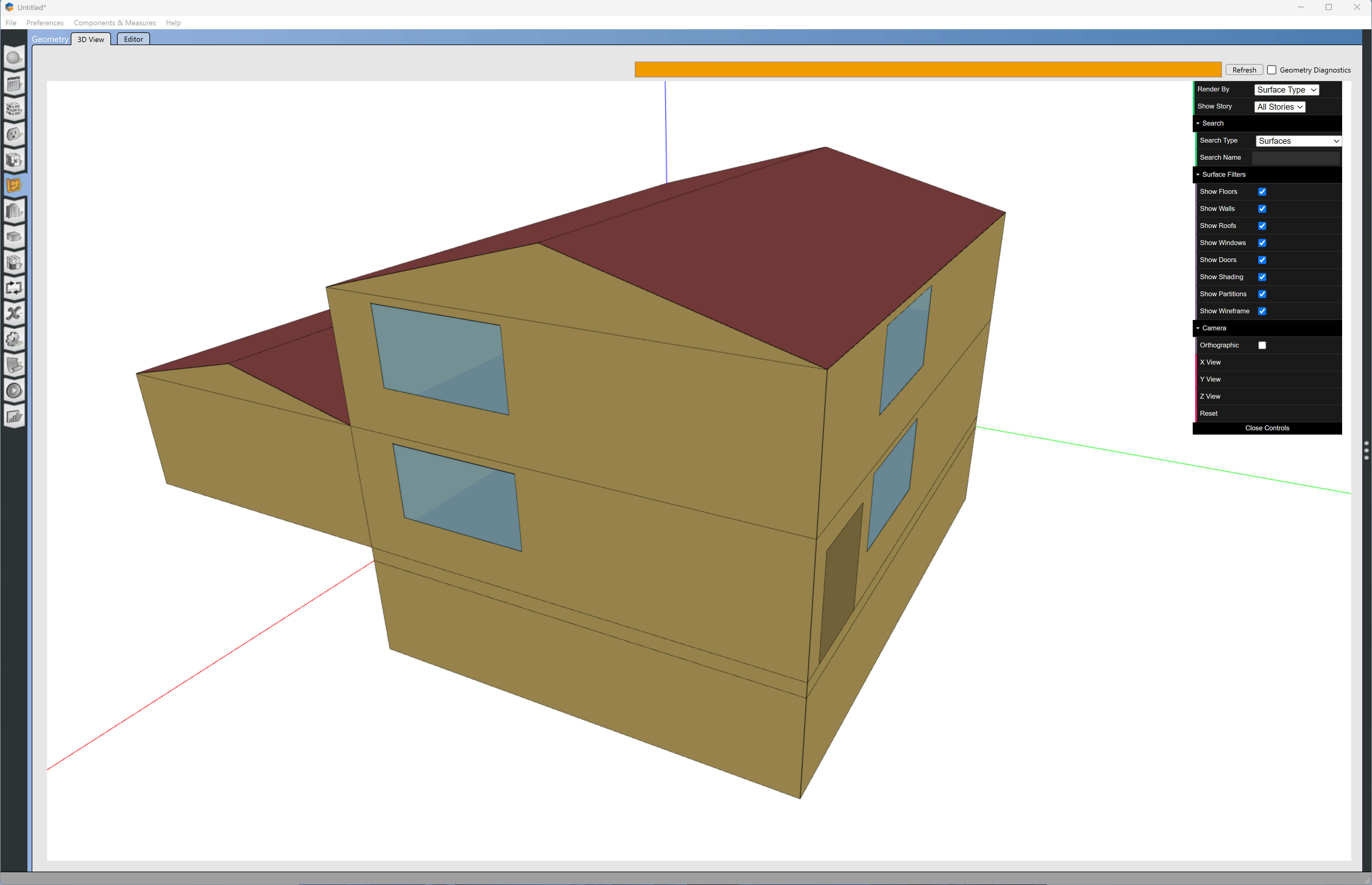
|
Manufactured Housing Single-section 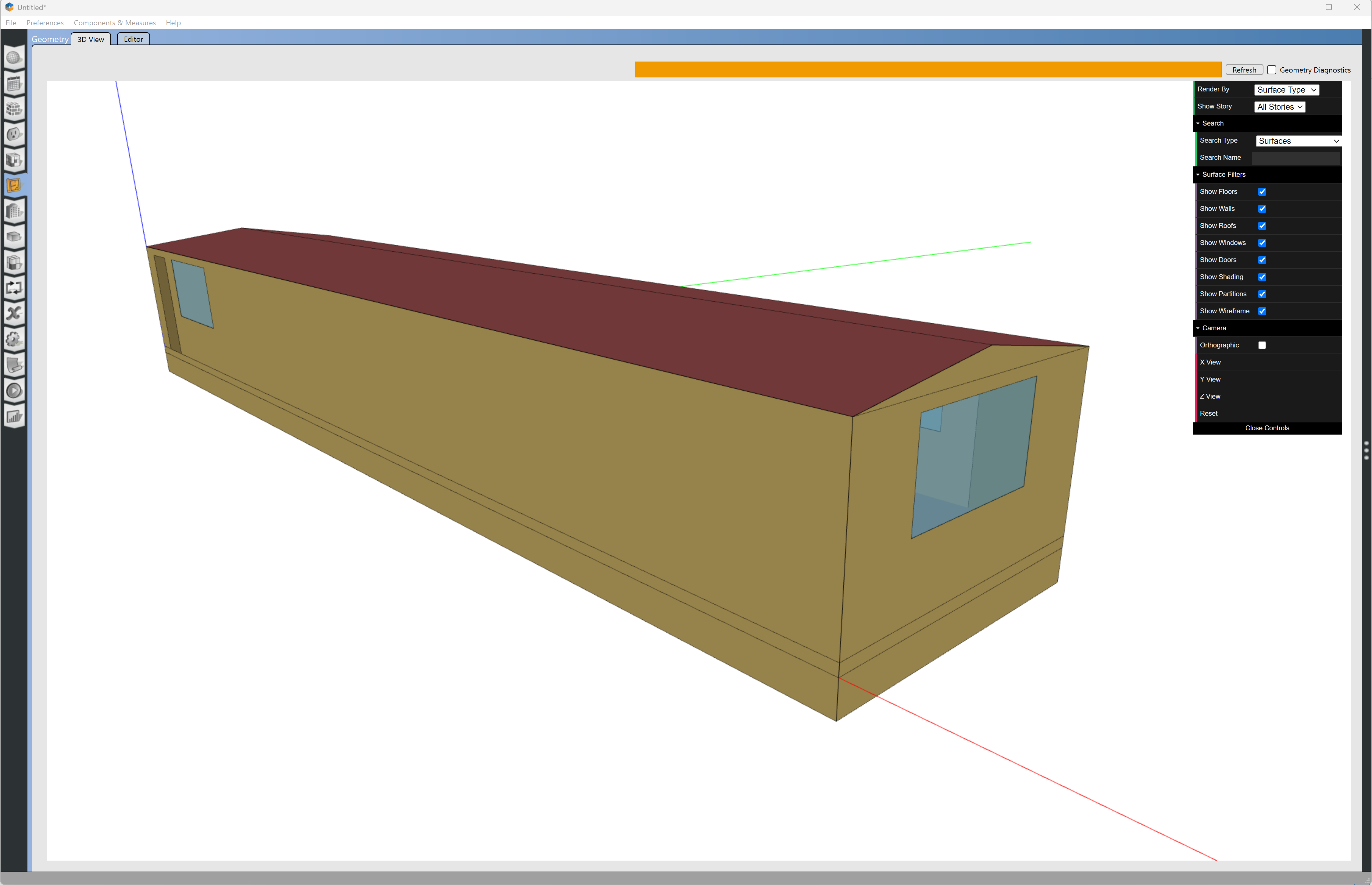
|
Multi-family low-rise apartment building with slab
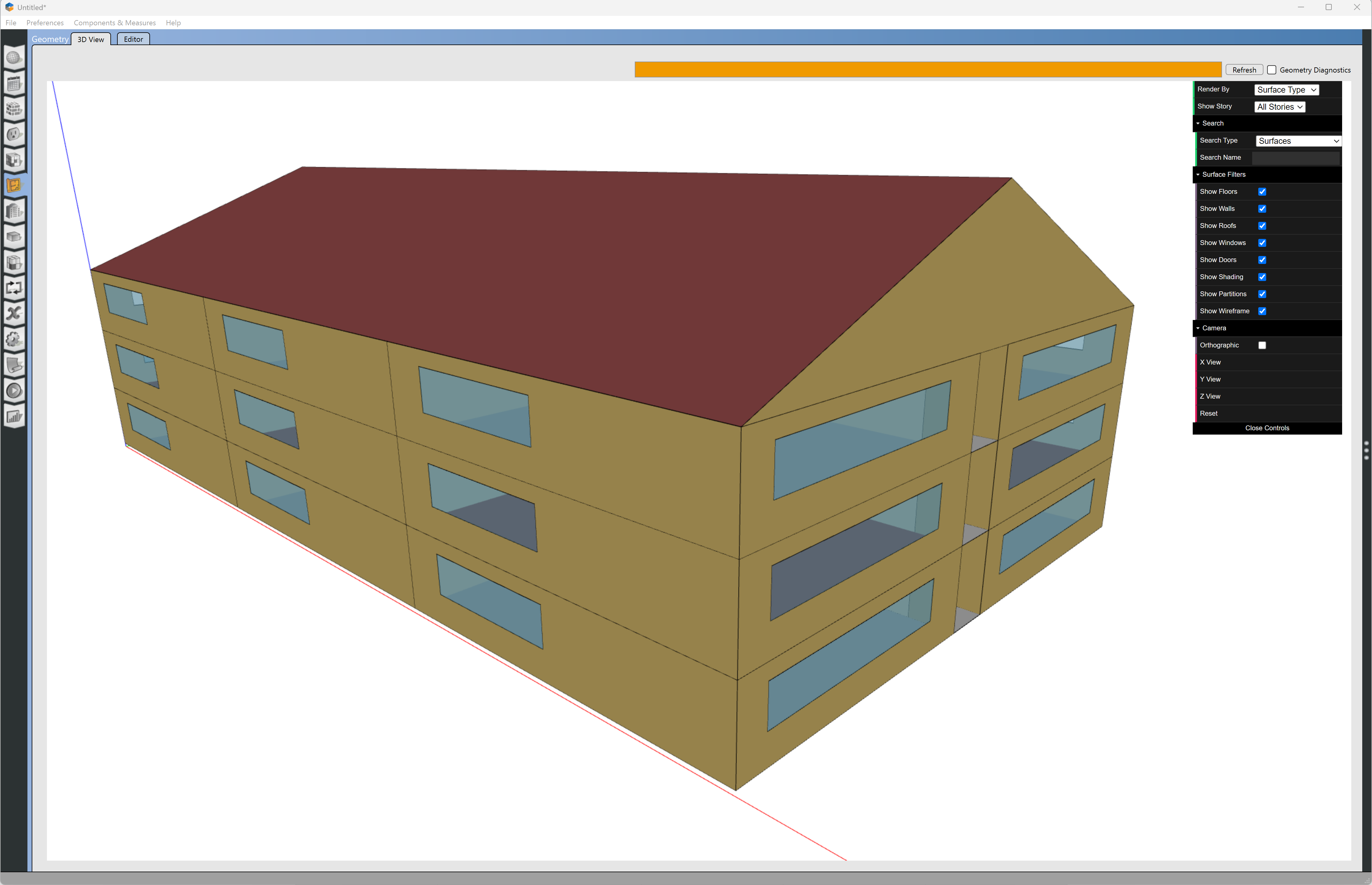
|
Multi-family low-rise apartment building with crawlspace
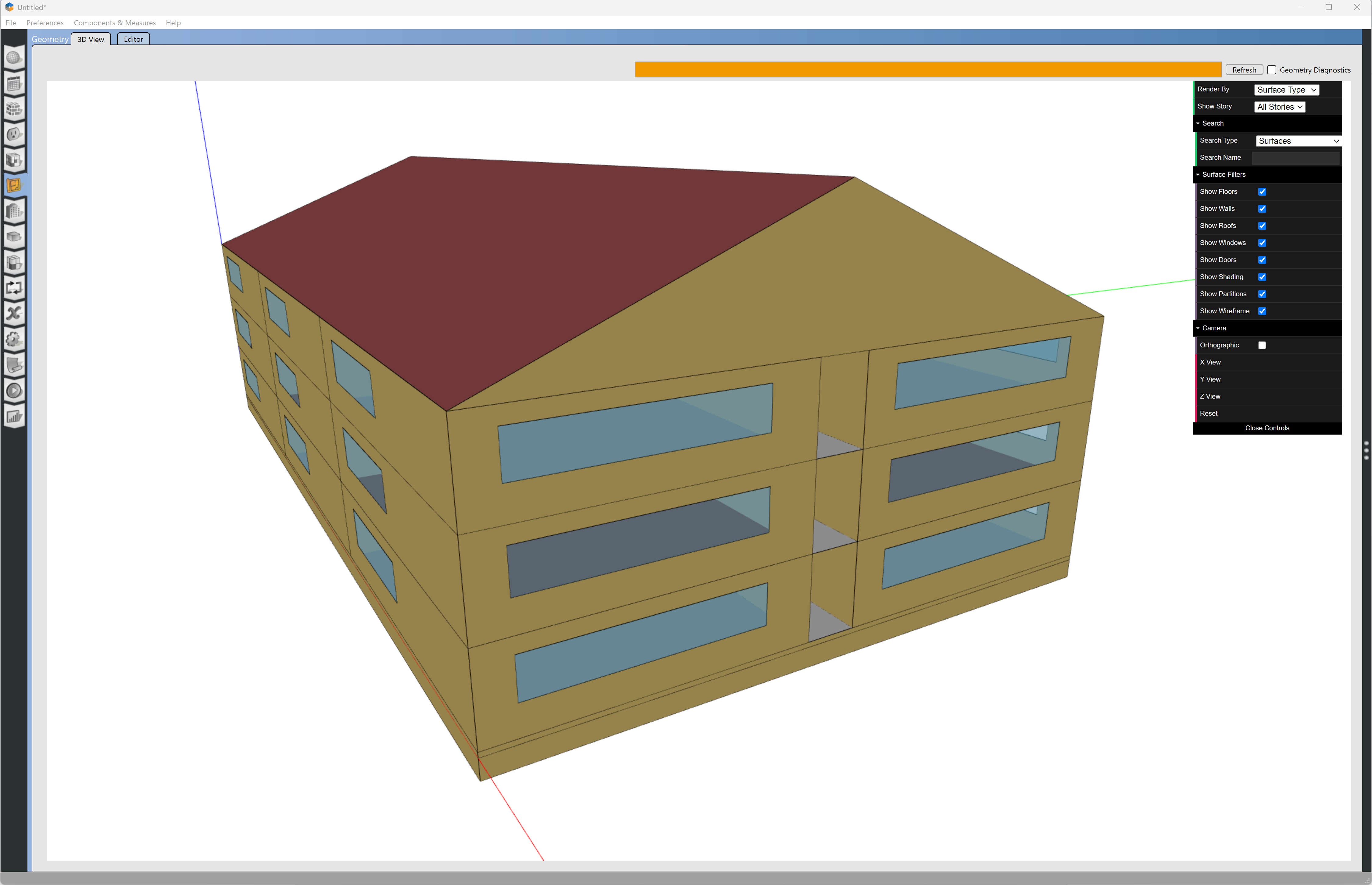
|
Multi-family low-rise apartment building with basement
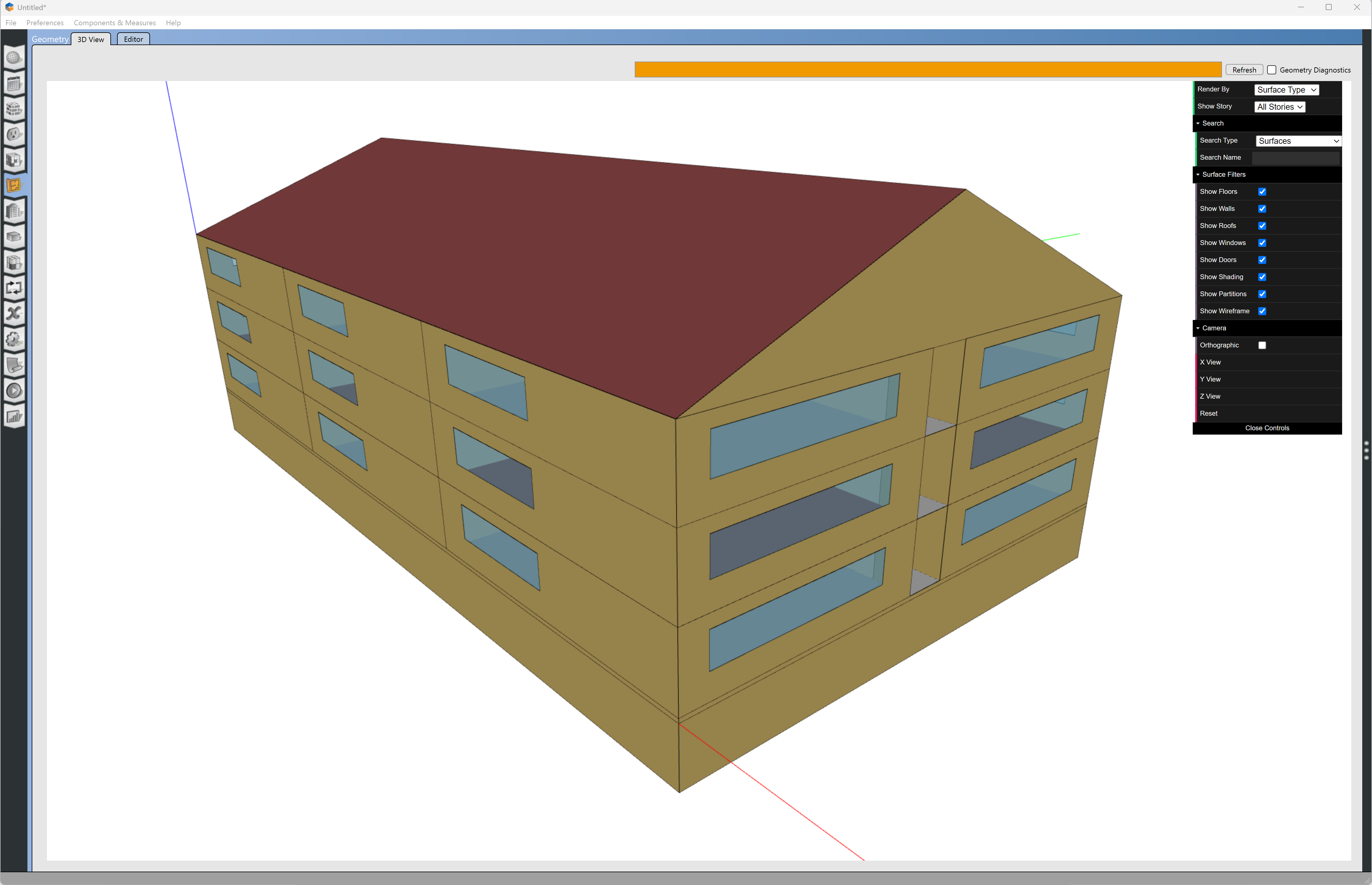
|
Manufactured Housing Multi-section 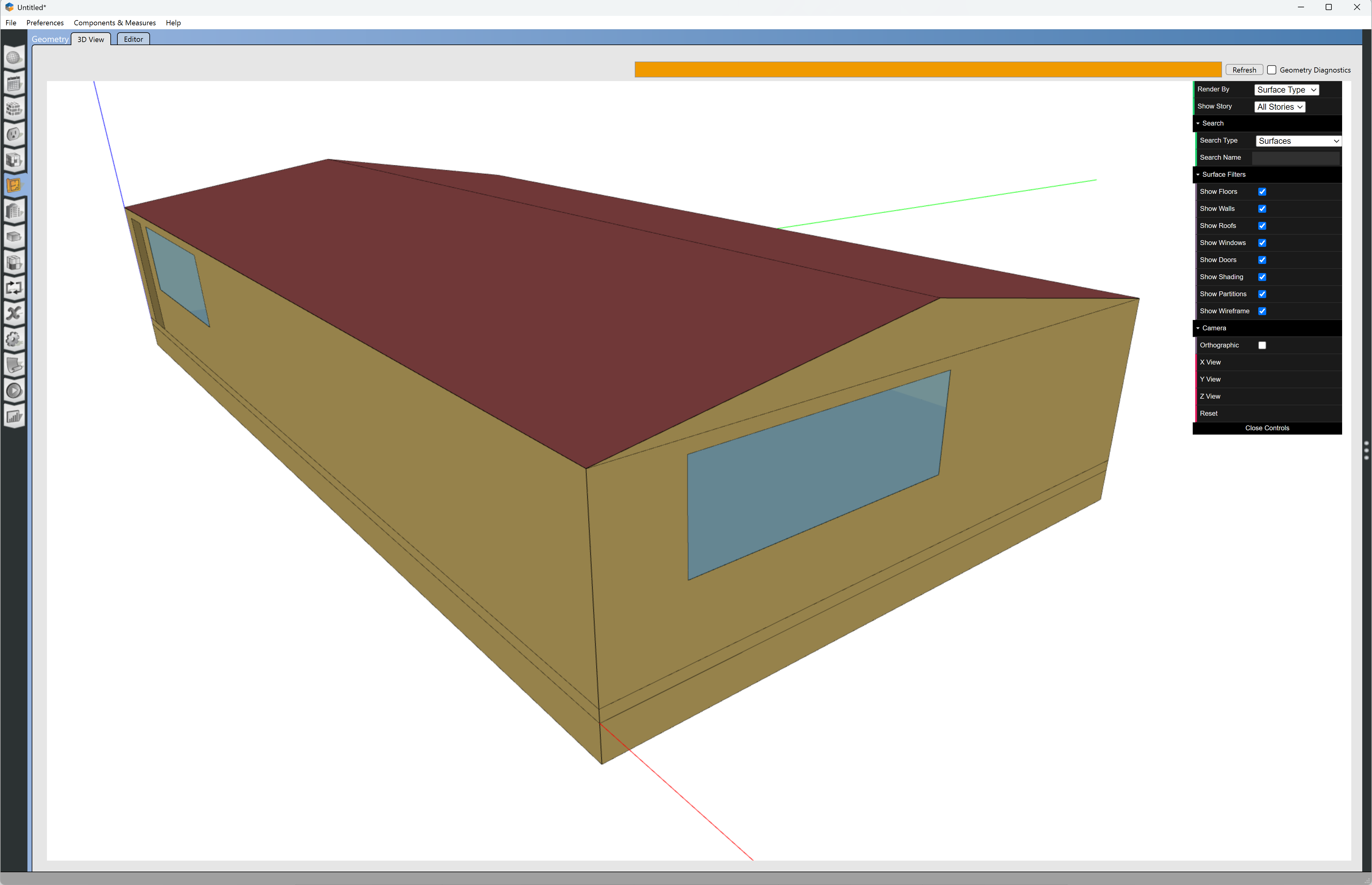
|
Contact

Mitchal Dichter
EnergyPlus Consultant
Reach out today for EnergyPlus modeling for a project, support learning EnergyPlus, or technical assistance. mitchaldichter@beminstructionals.com
My career in the energy industry started at the UC Davis Western Cooling Efficiency Center (WCEC) in 2017. My work at the WCEC was focused on behind the meter energy usage and efficiency technologies. The main project I worked on was to generate millions of EnergyPlus models from parametrically combining different energy efficiency technologies on different commercial building types in multiple climate zones, running them all on a UC Davis compute cluster. Other projects I worked on included modeling a novel ground source heat pump in Python and co-simulation with an EnergyPlus building model, wrote linear programming models of electric utility tariffs for optimization of battery control in buildings using the Python PuLP package, and determining the building construction components that made phase change materials effective.
My career in the energy industry started at the UC Davis Western Cooling Efficiency Center (WCEC) in 2017. My work at the WCEC was focused on behind the meter energy usage and efficiency technologies. The main project I worked on was to generate millions of EnergyPlus models from parametrically combining different energy efficiency technologies on different commercial building types in multiple climate zones, running them all on a UC Davis compute cluster. Other projects I worked on included modeling a novel ground source heat pump in Python and co-simulation with an EnergyPlus building model, wrote linear programming models of electric utility tariffs for optimization of battery control in buildings using the Python PuLP package, and determining the building construction components that made phase change materials effective.
MSc Applied Mathematics | BS Computer Science
LinkedIn Page |
GitHub Projects
